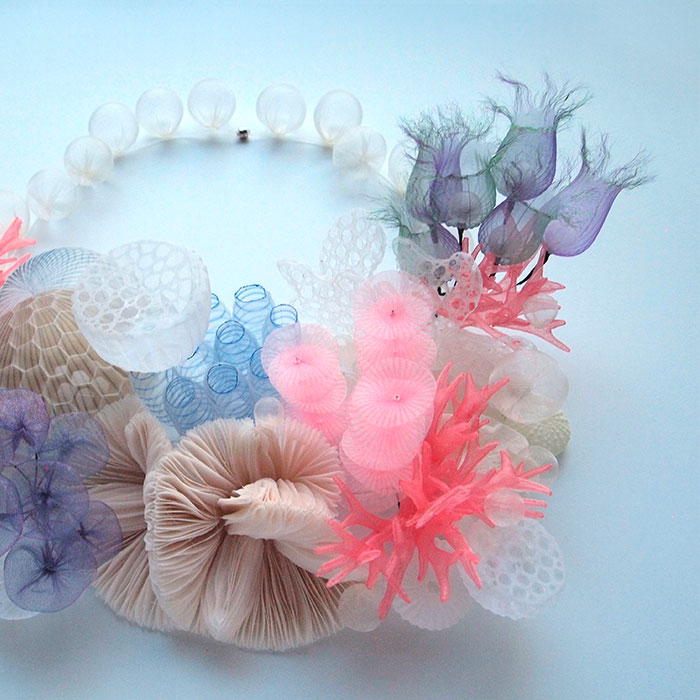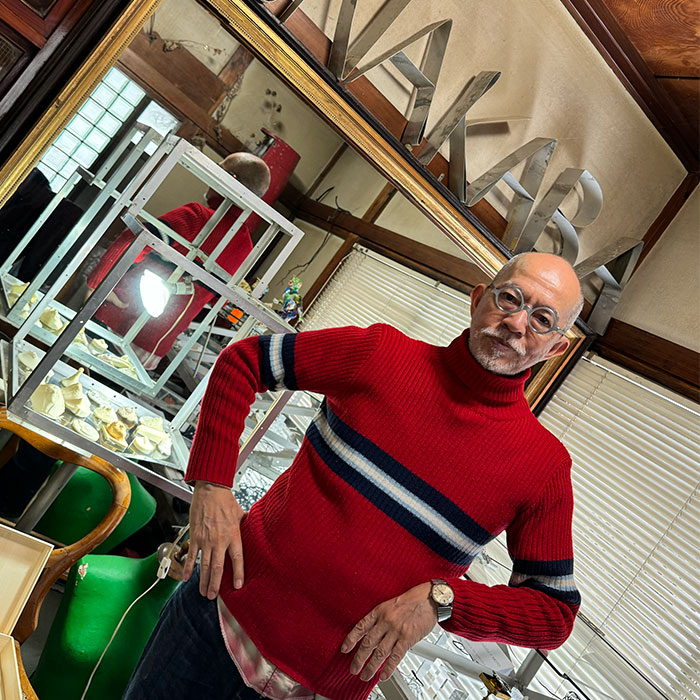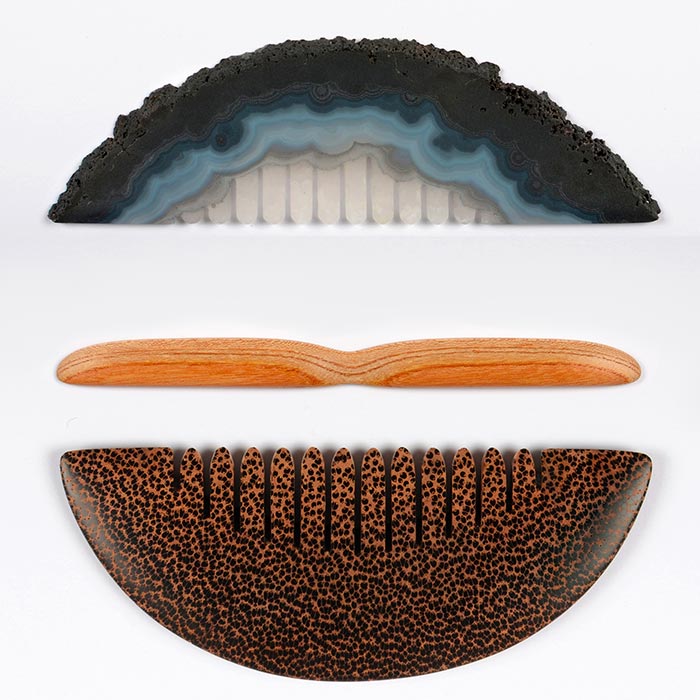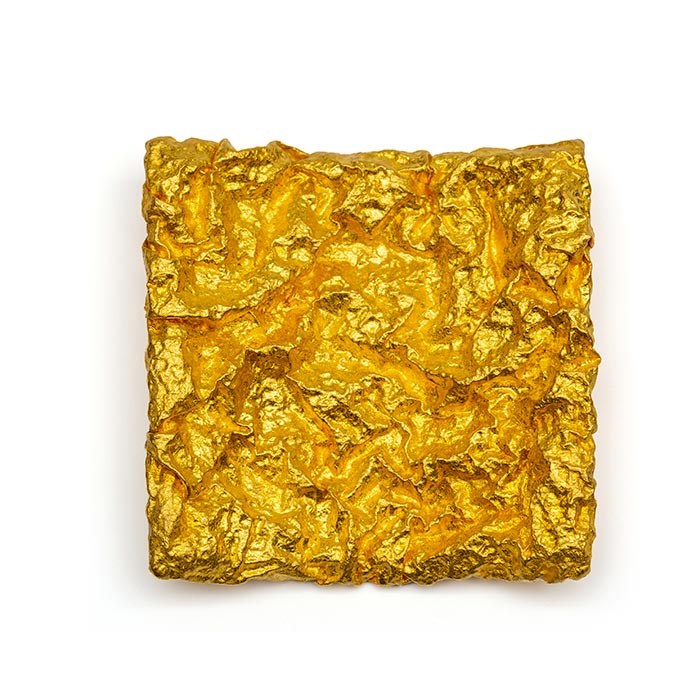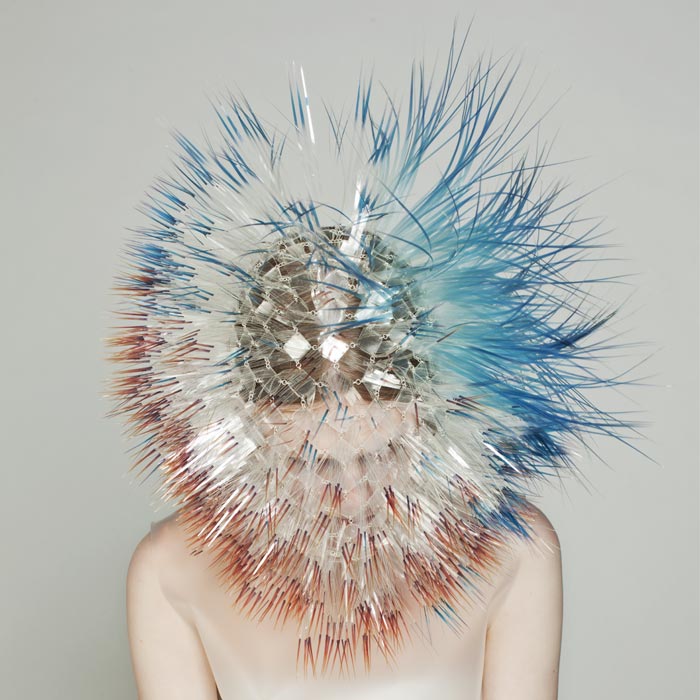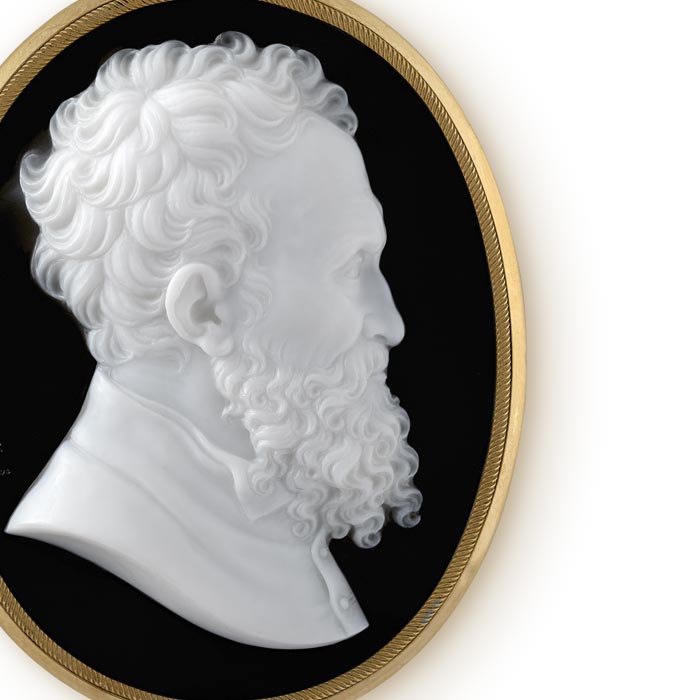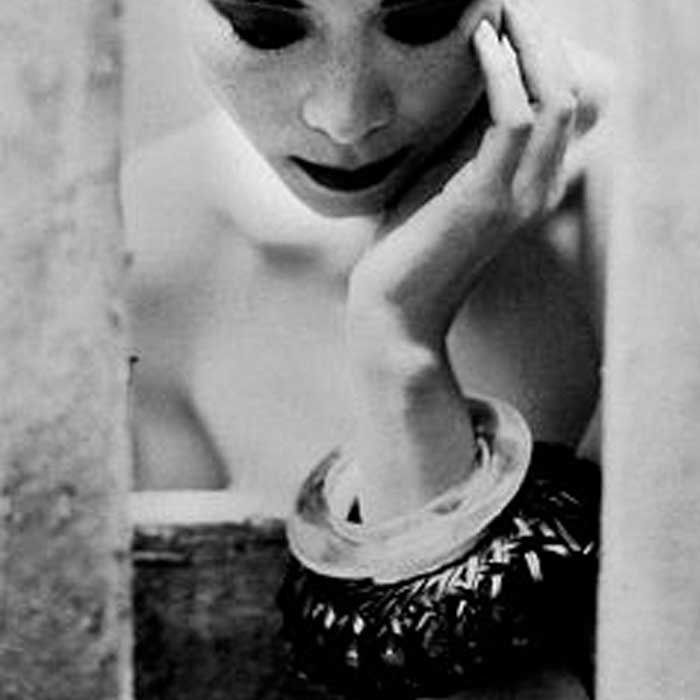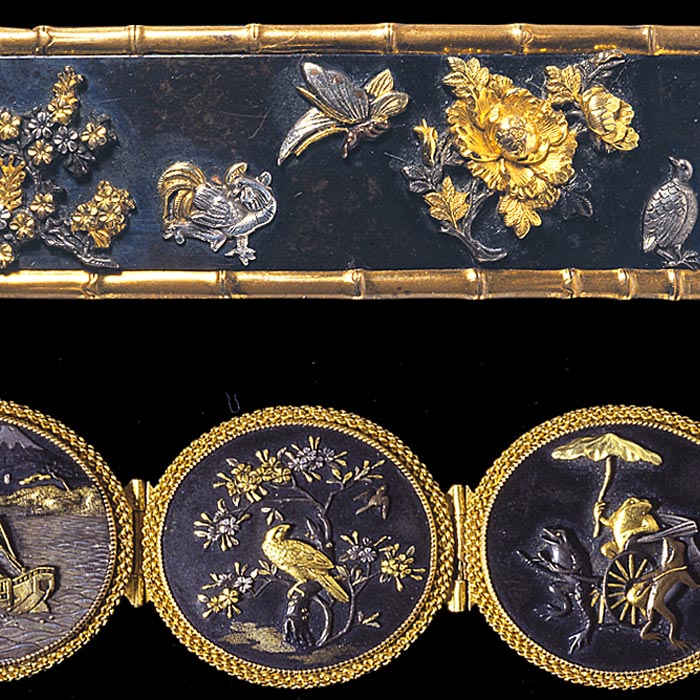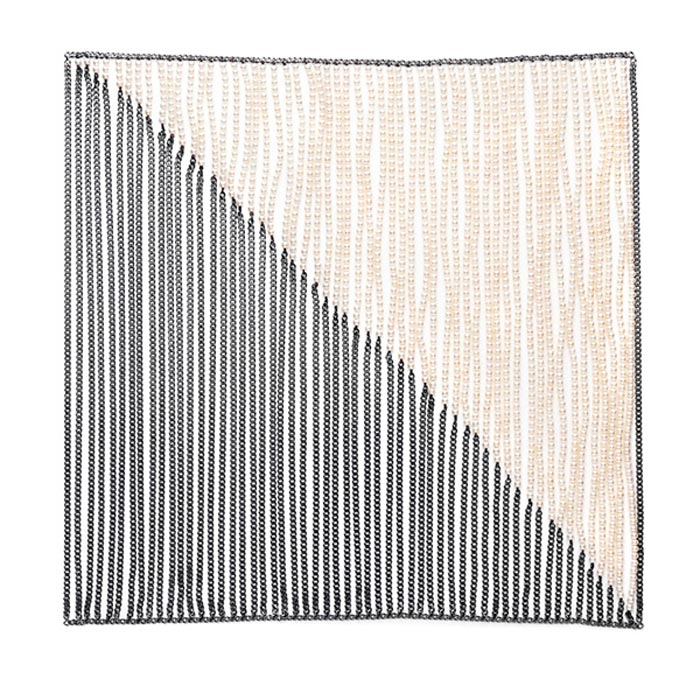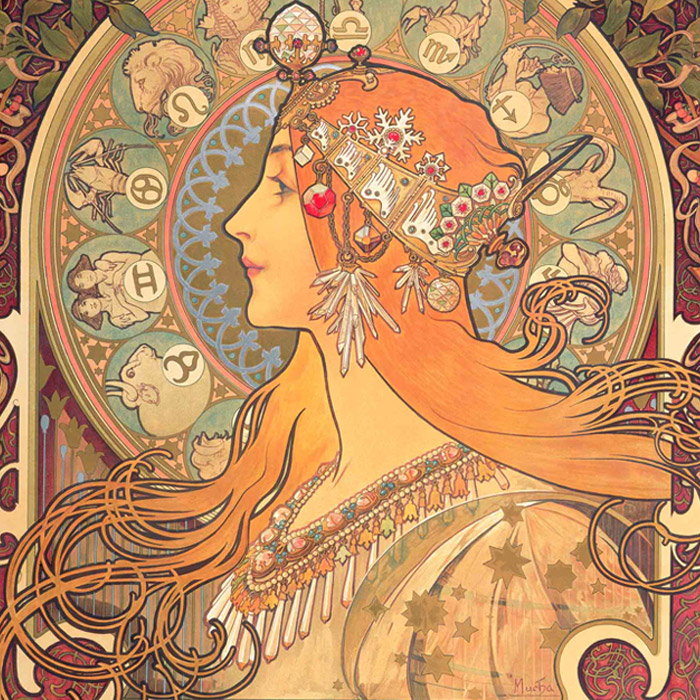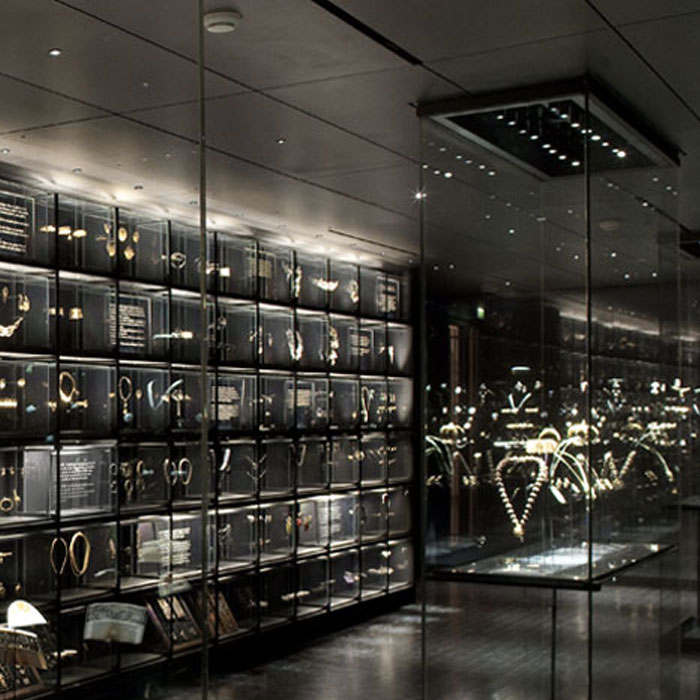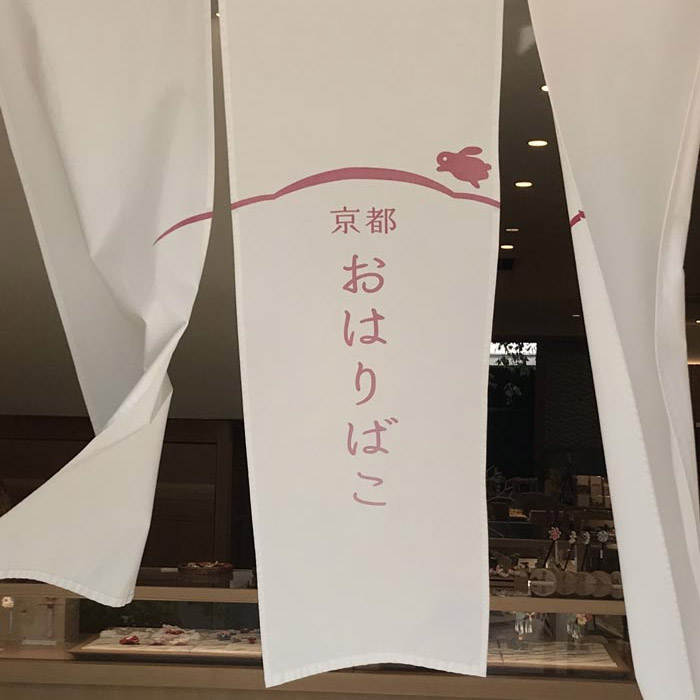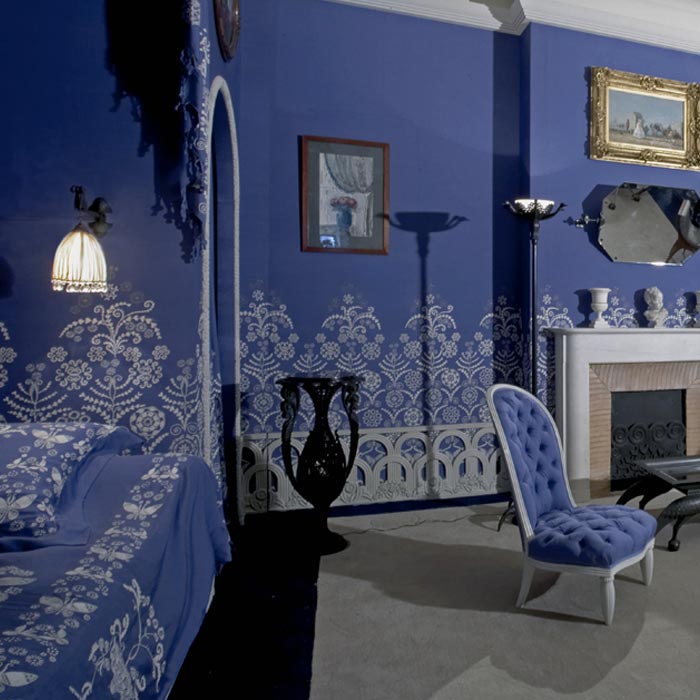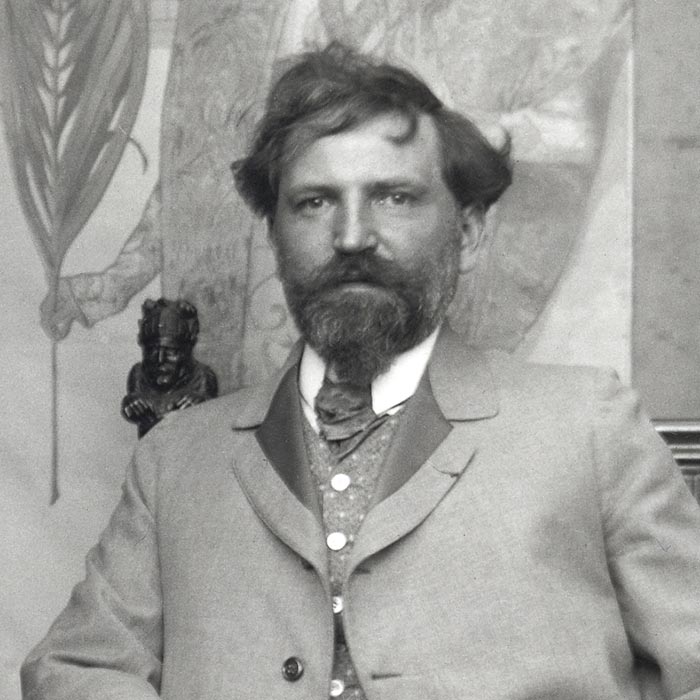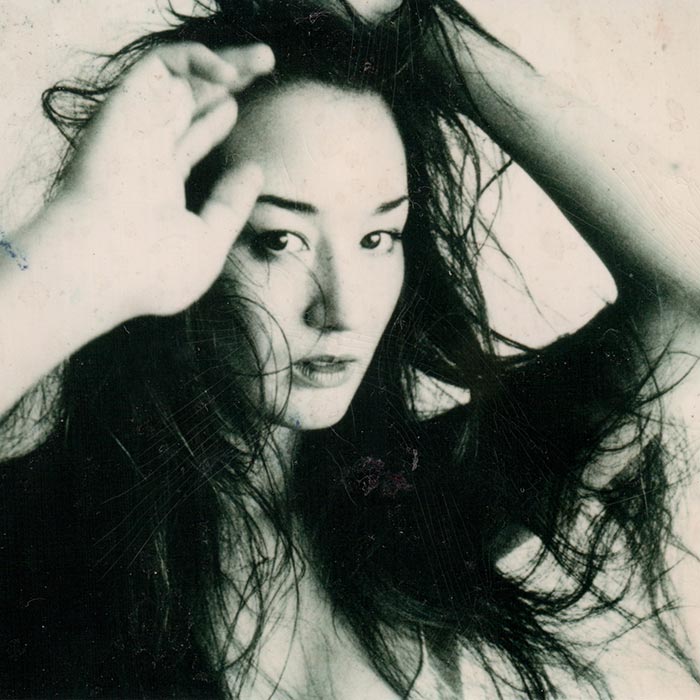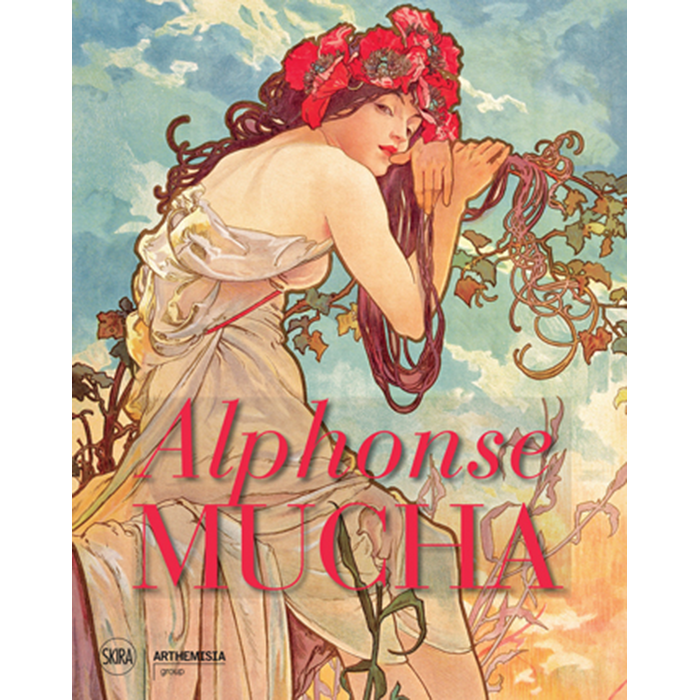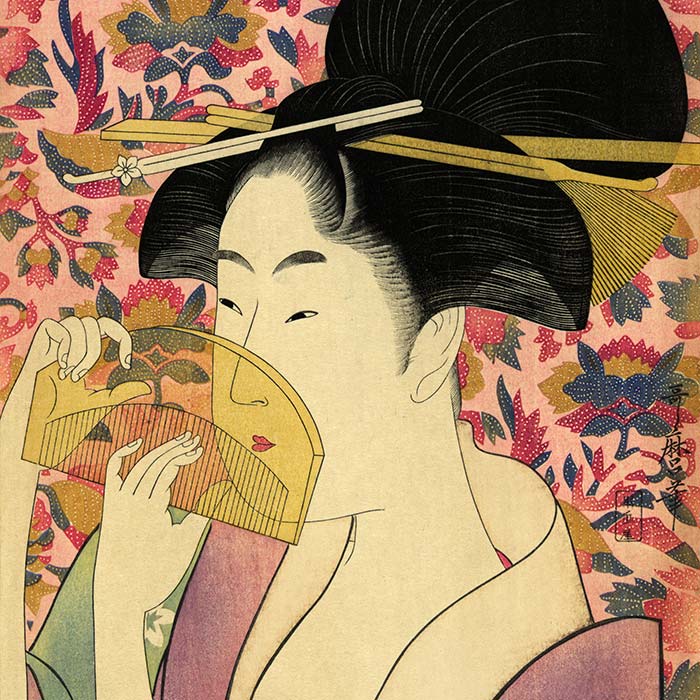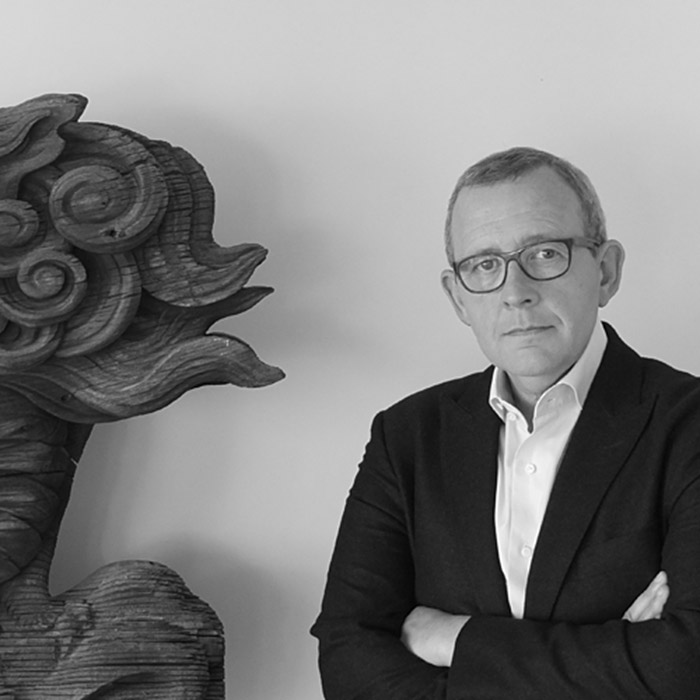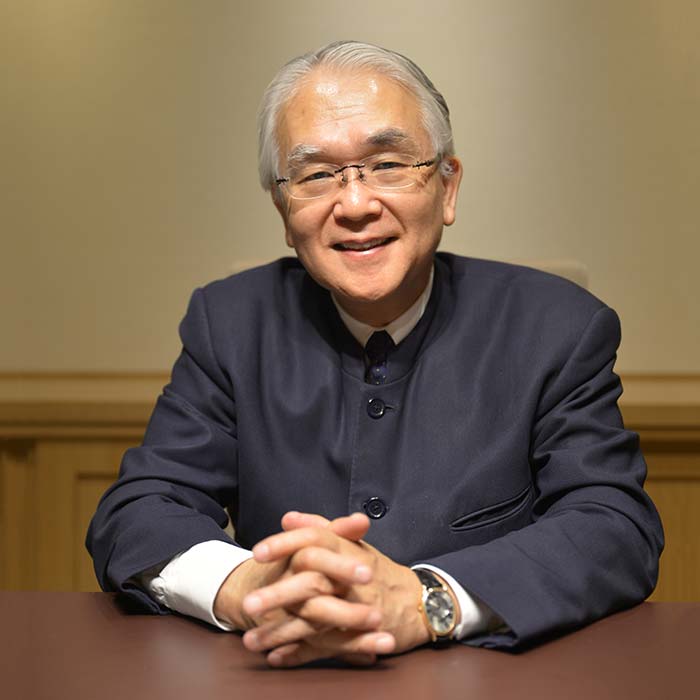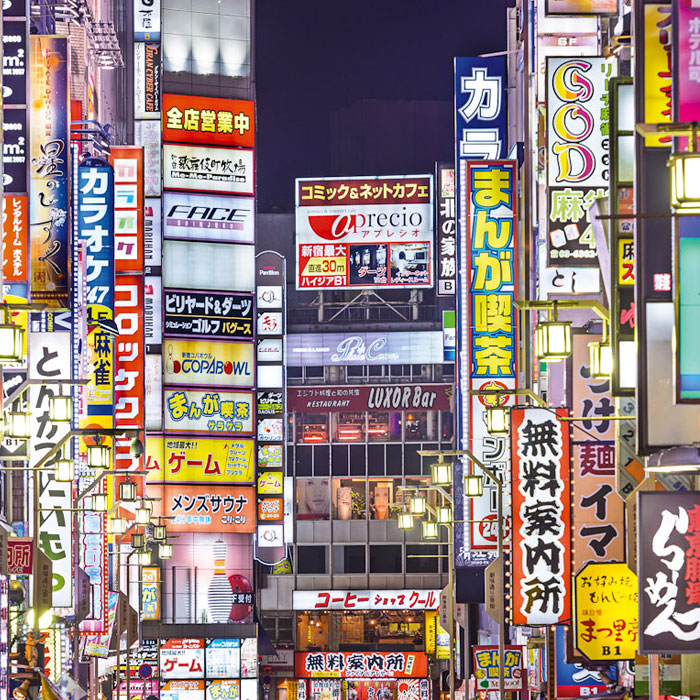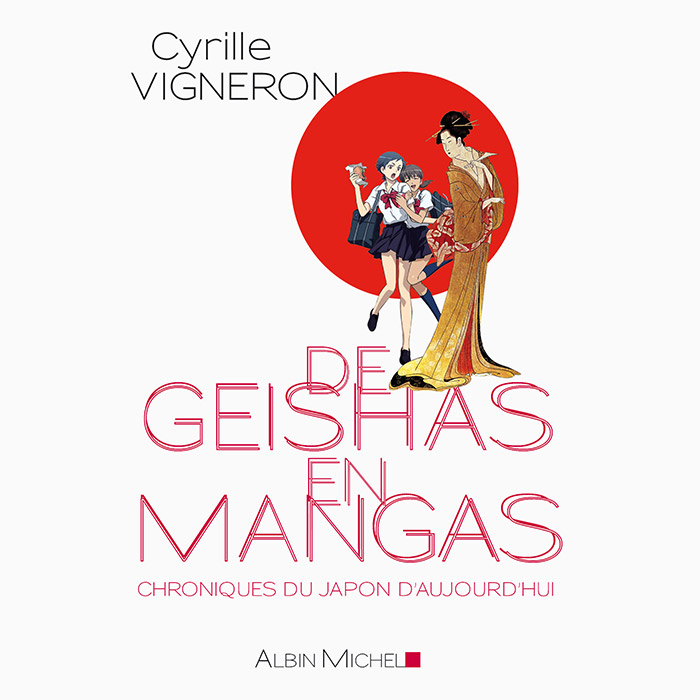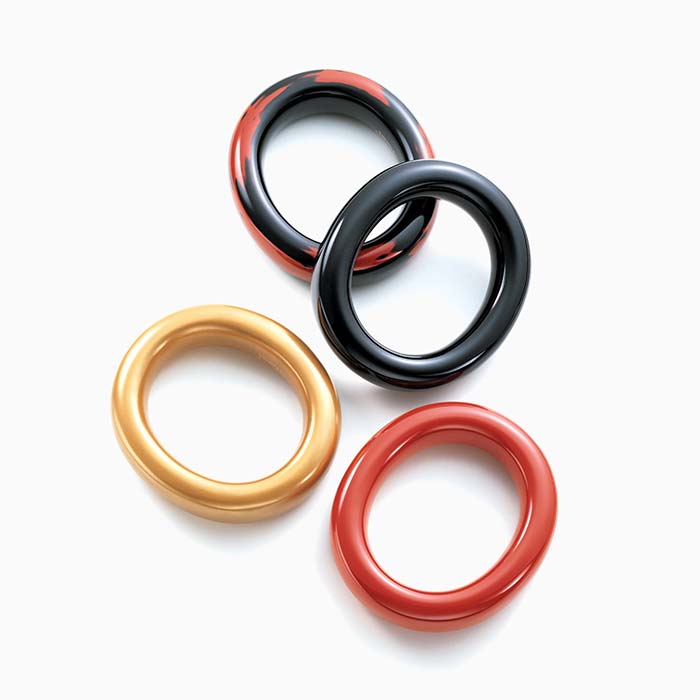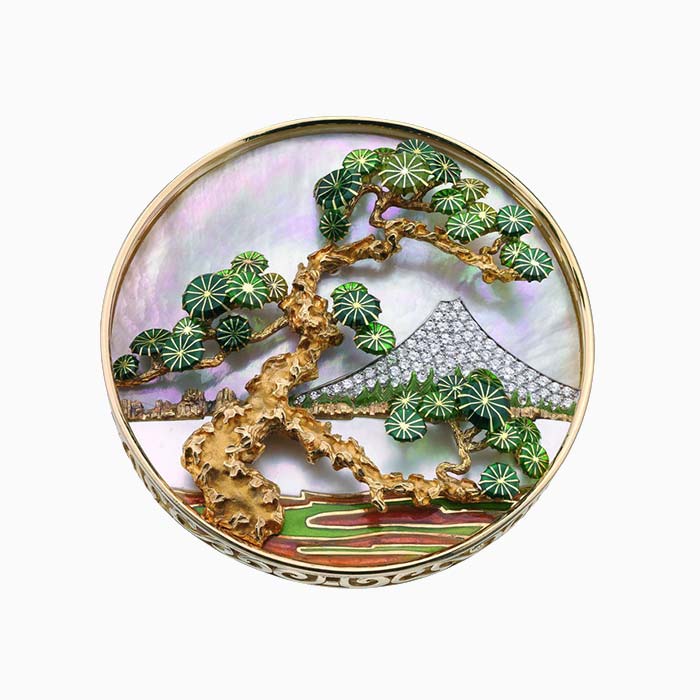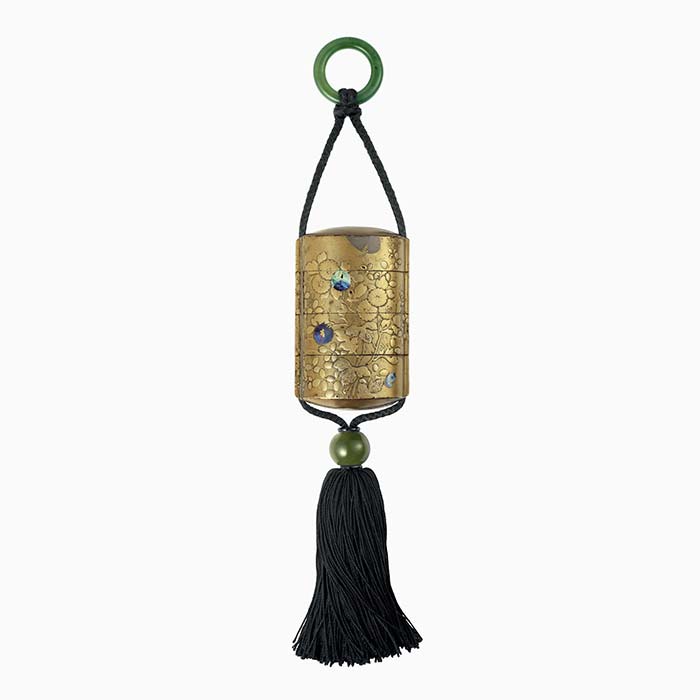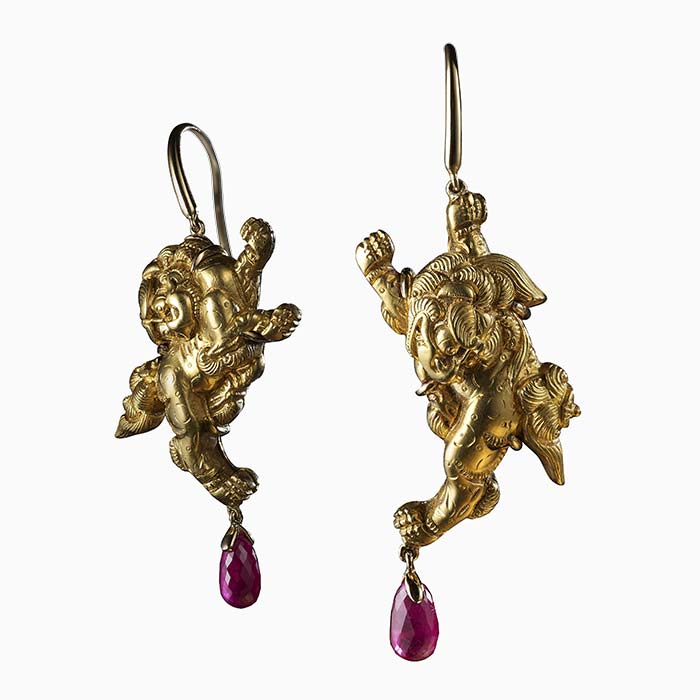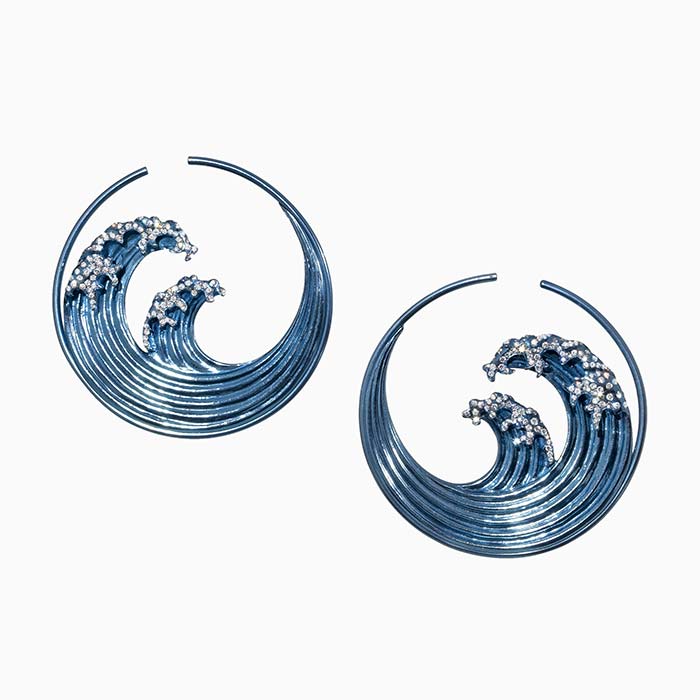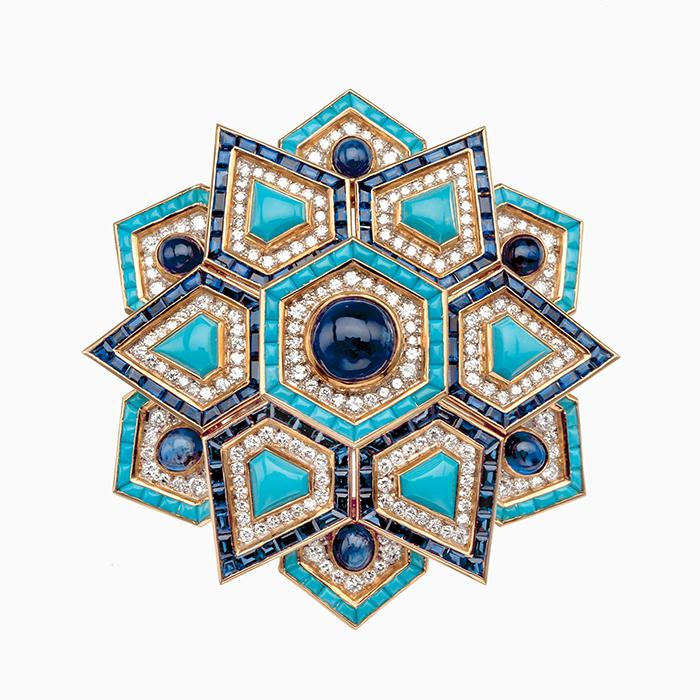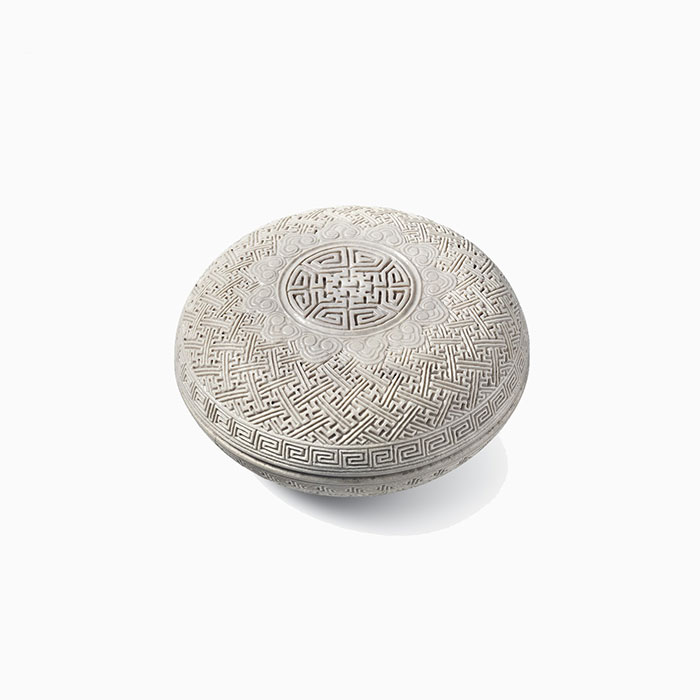Experience the excitement of jewelry
11 December 2024
Issey Miyake, flower jewelry by Maiko Takeda
The flower jewelry is inspired by the collection’s theme, ‘The Beauty of Paper’, the art of Japanese washi paper.
16 October 2024
5 avant-garde jewels to treat yourself when you love Japan
Made from non-precious materials and with no reference to the past, these 5 avant-garde jewels are a space where designers Fumiki Taguchi, Shinji Nakaba, Manami Aoki, Mariko Kusumoto, Kazumi Nagano express the delicacy, dexterity and almost obsessive attention to detail of 18th-century craftsmen.
28 May 2024
In Tokyo with Tomohiro Sadakiyo from the Hum brand
The Japanese aspect of Hum lies rather in the work on metal colors and textures. And its philosophy.
22 April 2024
In Japan, in the workshop of Shinji Nakaba
In 2023, the Loewe Foundation Craft prize brought Shinji Nakaba into the spotlight, but this self-taught jewelry designer had in fact been creating jewelry since 1974, when he was 24.
01 March 2024
In Toyokoro, the Jewelry Ice Beach
On this beach in Otsu, Hokkaido, shards of ice glisten in the sunlight like precious stones.
22 August 2021
Marion Delarue: variations on kanzashi, kushi and kogai
A graduate in Contemporary Jewelry of the École Supérieure des Arts Décoratifs in Strasbourg, Marion Delarue respects the classical forms of the Japanese comb and spikes.
02 May 2021
Yasuki Hiramatsu at auction: a first
By Marie-Laure Cassius-Duranton.
Auctions are not only about jewelry that once belonged to our ancestors. Three creations of Yasuki Hiramatsu (1926-2012), considered the first contemporary Japanese jeweler-artist, have just been sold by De Zwann (Amsterdam) – marking a first. Highly appreciated by the initiated, his pieces are usually sold in specialized galleries and have no auction price yet. The showpiece, a square brooch in crumpled gold, is characteristic of Hiramatsu’s sensual relationship with the material. Coming from a family of metalworkers, Hiramatsu finely rolled his gold, then bent, crumpled, hammered or beat it to create textured surfaces. The shapes are simple, the most important thing is the relationship of the metal to the light. The brooch (a similar example can be seen at the Victoria & Albert Museum), estimated at €1800-2,200, went under the hammer for €3,200.
10 February 2020
Maiko Takeda's head jewelry
Maiko Takeda concentrates mainly on head adornments. Whether with masks, halos or visors, this Japanese designer based in London makes them out of feathers laser-cut from plastic film or acrylic. The color gradations accentuate the transparency, and the play of light and shadow. These head ornaments oscillate between the dandelion flower that disappears in the slightest breeze and the helmet bristling with nerve endings intended for some neuroscientific experiment. Maiko Takeda is passionate about science and loves the minimal, repetitive, obsessive music of Philip Glass.
06 January 2020
Kazumi Arikawa, cameo and intaglio addict
During my last visit to Albion Art in Tokyo, I’ve been privileged to discover Kazumi Arikawa’s superb collection of cameos and intaglios. Including his recent acquisitions from the London dealer Wartski.
04 December 2018
Discover the art of bamboo
When I saw the exhibition “Fendre l’air – Art of bamboo in Japan”, I immediately thought of Tina Chow’s jewelry.
13 November 2018
Kazumi Arikawa donated 3 marvelous jewels to the Met
As the main sponsor of the exhibition “The Body Transformed”, Kazumi Arikawa, president of Albion Art, donated 3 European jewels from the second half of the 19th century, in connection with Japan.
24 September 2018
Everything you need to know about Tasaki
Tasaki is the most talked-about jeweler in Japan. Now expanding worldwide, he is opening one store in Great-Britain and one in Paris, where he is also sponsoring the “Japon-Japonismes” exhibition.
28 August 2018
Art nouveau jewelry in the "Alphonse Mucha" exhibition
Rather unexpectedly, jewelry features large in the “Alphonse Mucha” exhibition at the Musée du Luxembourg. In his posters, the celebrated Art Nouveau artist excelled in the design of astounding bib necklaces in gems and pearls, diadems with allegorical details and flowery crowns setting off luxuriant, wavy hair. The gold and opal chain on show reminds us that some of his magnificent pieces were given shape by the jeweler Georges Fouquet for the Universal Exhibition of 1900. Sarah Bernhardt was one of the most famous champions of Mucha.
“Alphonse Mucha” – From 12 September 2018 to 27 January 2019 at the Musée du Luxembourg
Article related to this topic:
27 June 2018
The historical part of the gallery des Bijoux in the Musée des Arts Décoratifs
The Musée des Arts Décoratifs in Paris has a collection of over 5,000 necklaces, bracelets, brooches and rings. A thousand of them are presented in two rooms of the gallery des Bijoux. A presentation of the historical part in a video with a commentary by the chief curator, Evelyne Possémé.
01 May 2018
2 jewelry addresses in Japan
Tokyo and Kyoto are shopping paradises: here are two beautiful must-visit boutiques.
16 April 2018
Henri Vever, the Art nouveau jeweler
Though the name of Henri Vever was eclipsed by René Lalique’s, this Paris jeweler played a key role in Art nouveau.
07 February 2018
7 reasons to go to the Musée des Arts Décoratifs
In fact, I could give you a thousand! But let me just cite a few of my favourite works and rooms, to encourage you to discover the Musée des Arts Décoratifs, the museum that’s just mad about objects.
03 April 2017
Mucha's Art Nouveau jewelry
Alfons Maria Mucha, best known for his advertising posters and decorative designs, also played an essential role in jewelry, notably thanks to his collaboration with the jeweler Georges Fouquet.
09 February 2017
Harumi Klossowska de Rola, artist
Daughter of the painters Balthus and Setsuko Ideta, Harumi traces her singular path in the world of jewelry.
30 December 2016
Mucha's jewelry
This book is a reminder that Alfons Mucha, a major Art Nouveau artist, was sensitive to jewelry. In his decorative paintings women wear plastrons and sophisticated hair ornaments. There are also rings, corset clips and enamel necklaces with arabesques and oriental motifs. The jeweler Georges Fouquet, whose famous serpent runs along the forearm of the actress Sarah Bernhardt in the poster for Medea, made some pieces.
24 November 2016
Jewelry and Japan
Until the nineteenth century and the Meiji era jewelry may seem to have been absent from Japanese culture, and yet this country has greatly influenced French jewelers.
24 November 2016
Jean-Christophe Charbonnier and his warrior jewelry
Silk, sculpted and crafted metal, gold … Japanese armor is akin to real ornaments. Jean-Christophe Charbonnier, a world-renowned specialist who provides pieces to leading museums like the Guimet or the Louvre in Abu Dhabi, decrypts it for us.
24 November 2016
Kazumi Arikawa, President of Albion Art
This Japanese dealer and collector who’s one of the most important in the world, has just opened a showroom in Paris. But I paid him a visit in Tokyo.
24 November 2016
Where to buy jewelry in Tokyo?
From international designers, to the underground scene and on to pearl jewelers, Tokyo is a gem.
24 November 2016
Chronicles of a president
Cyrille Vigneron, current president of Cartier, spent almost ten years in Japan heading Cartier and then LVMH. Released in 2009, his book takes the form of a journal giving first-hand accounts and acts as a cultural guide. With simplicity, he shares his impressions as seen through Western eyes. Some key pointers arising from it are, understanding the role of nature and of sumo, of hospitality, and of this all consuming passion the Japanese have for fashion.
23 November 2016
Elsa Peretti's Japan
Elsa Peretti went to Japan for the first time in 1969: there, “the speed and technology of the train going from Tokyo to Kyoto and the traditional know-how particularly marked my creations”. From this came her lacquered bracelets for Tiffany & Co., in Japanese wood renowned for its lightness.
02 November 2016
10 Japanese-inspired jewelry pieces
The Meiji era (1868-1912) marked the end of isolation and the opening up of Japan to the West, which in turn discovered this largely unknown country. Since that time, Western jewelers seeking new inspiration have continued to interpret this country’s emblematic designs and imagery, like the orchid, origami, Mount Fuji or Noh Theater masks.
27 October 2016
Cartier and Japan
The reopening of the Cartier flagship in Tokyo is a reminder of the ties this French jeweler has had over the years with Japan.
20 October 2016
Samurai jewelry
The samurai sword is a true work of art composed of finely crafted elements in magnolia wood, silk, horn and lacquer. Marc Auclert has created bracelets and necklaces from the old gold menuki mounted on either side of the grip. Beautiful.
28 September 2016
Hokusai’s wave
In his new creations, François Garaude has forsaken the gemstones he’s been working with over the past years. He has depicted the famous work by Hokusai, The Wave, in earrings made of titanium, as this material is the only one capable of reproducing the intensity of the Prussian blue, which in 1830, renewed the language of Japanese printmaking.
10 June 2016
Ethno-jeweler voyages
Elsewhere… To stay on course, here are twelve emblematic jewels of jewelry’s favorite theme.
08 December 2015
L’Asie rêvée by Cartier
From the turn of the twentieth century, Cartier has drawn inspiration from Chinese and Japanese objects. The exhibition “L’Asie Rêvée” in the Baur and Cartier collections puts side-by-side 160 of the jeweler’s pieces and objects, and those of the Swiss, Alfred Baur, which mainly come from the Qing Dynasty (1644-1912). On the theme of the dragonfly, a diamond, ruby and emerald pin from 1953 is found alongside a nineteenth-century lacquered box inlaid with mother-of-pearl and with inrô compartments. A black and white art deco brooch sits beside a cream “soft paste” porcelain seal box. In the display cabinets, luxurious materials echo off the exotic designs and colours with infinite poetry.
Until February 14th, 2016 at the Baur Foundation, Geneva.


-
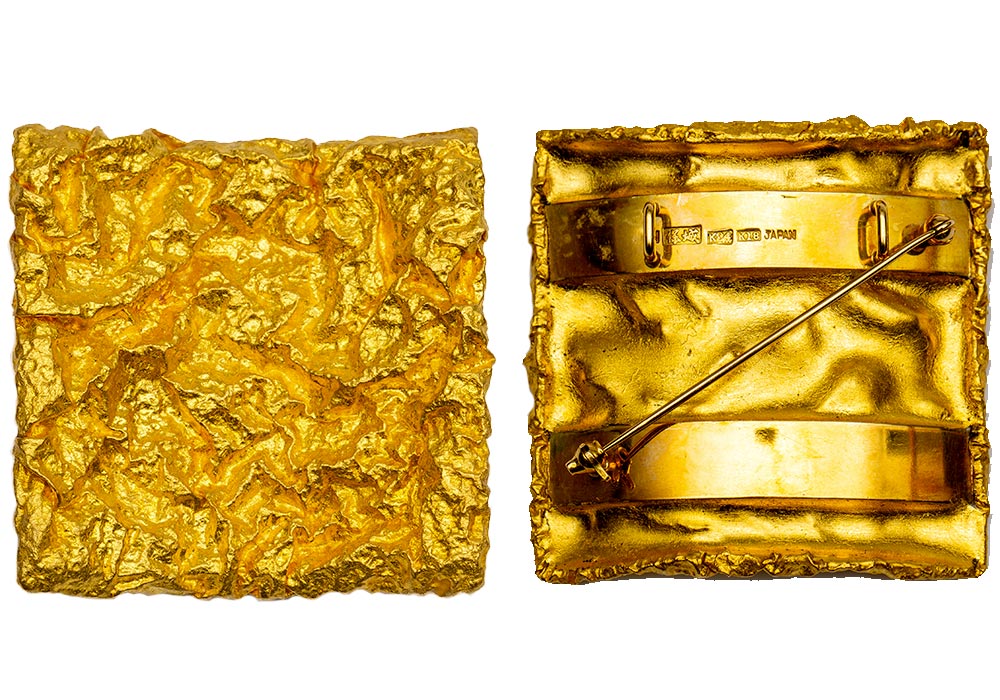
Yasuki Hiramatsu - "Crumpled Paper" brooch in gold - Ca. 1989
-
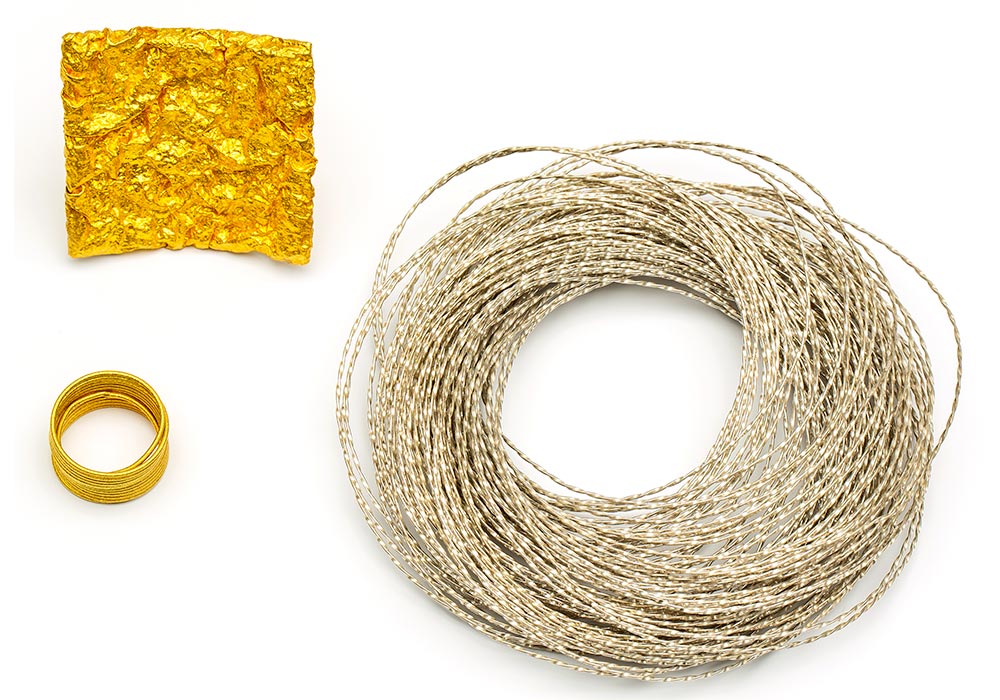
Yasuki Hiramatsu - Brooch and ring in gold, armband in silver
-
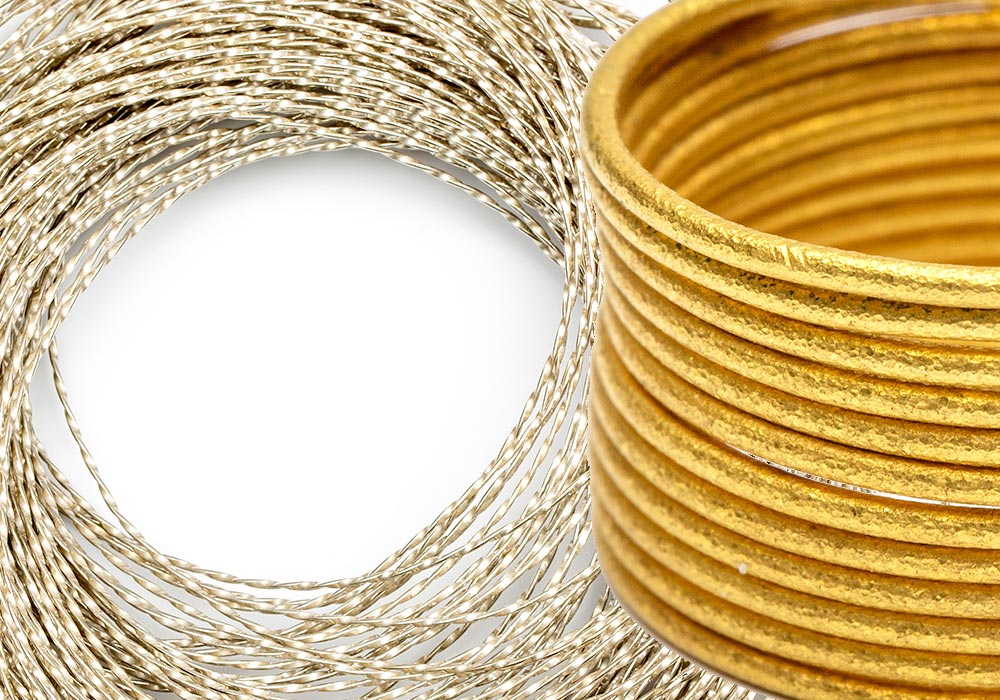
Yasuki Hiramatsu - Armband composed of many bracelets in twisted silver wire - 1990
-
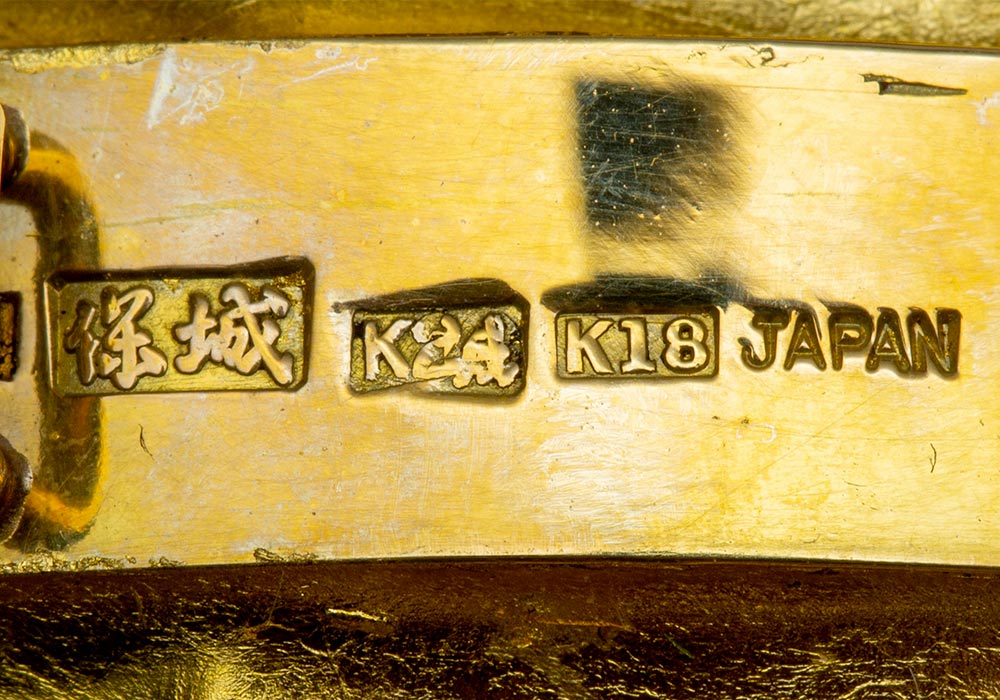
Yasuki Hiramatsu - Maker's mark
-
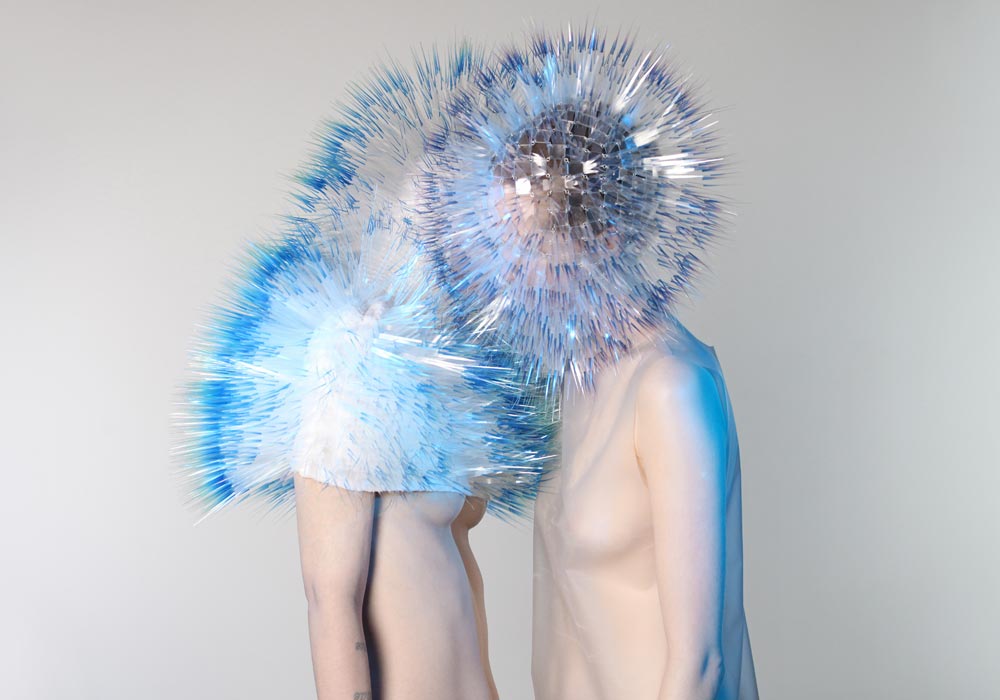
Maiko Takeda
-
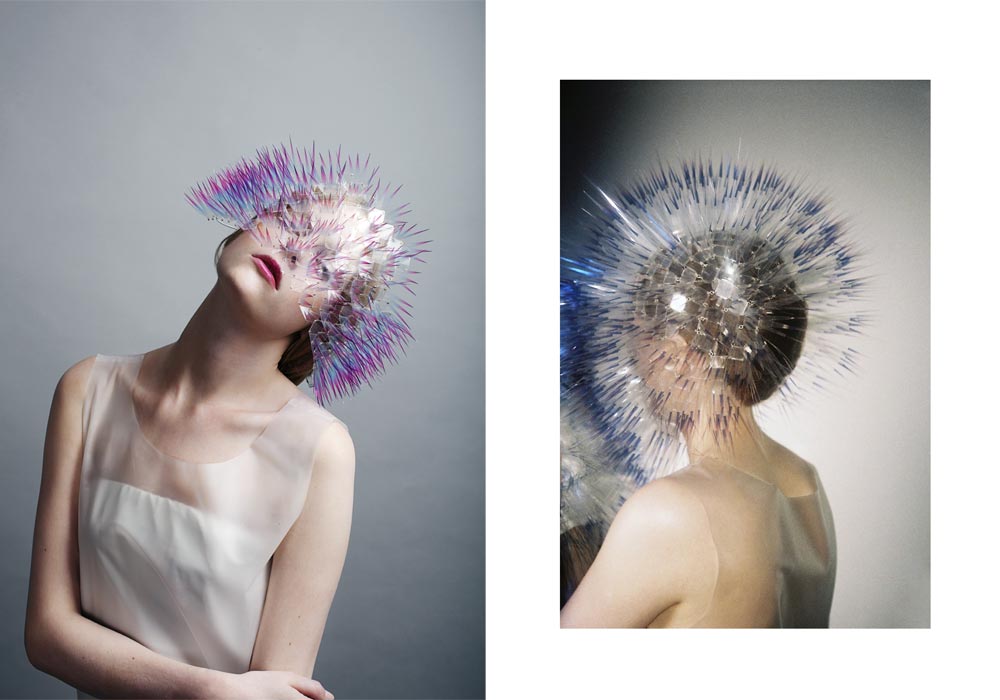
Maiko Takeda
-
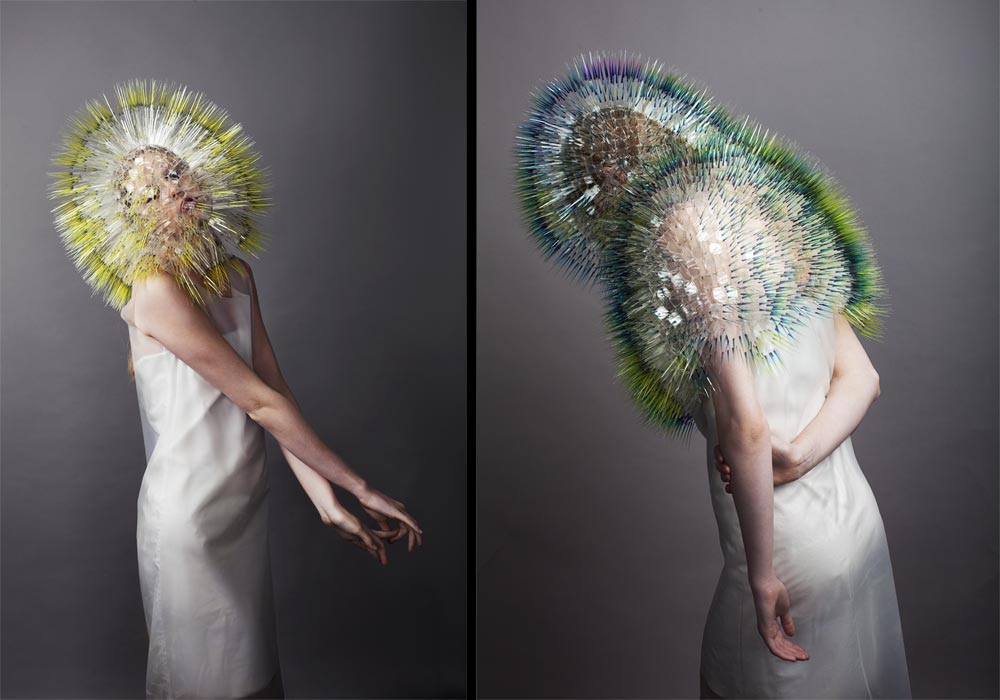
Maiko Takeda
-
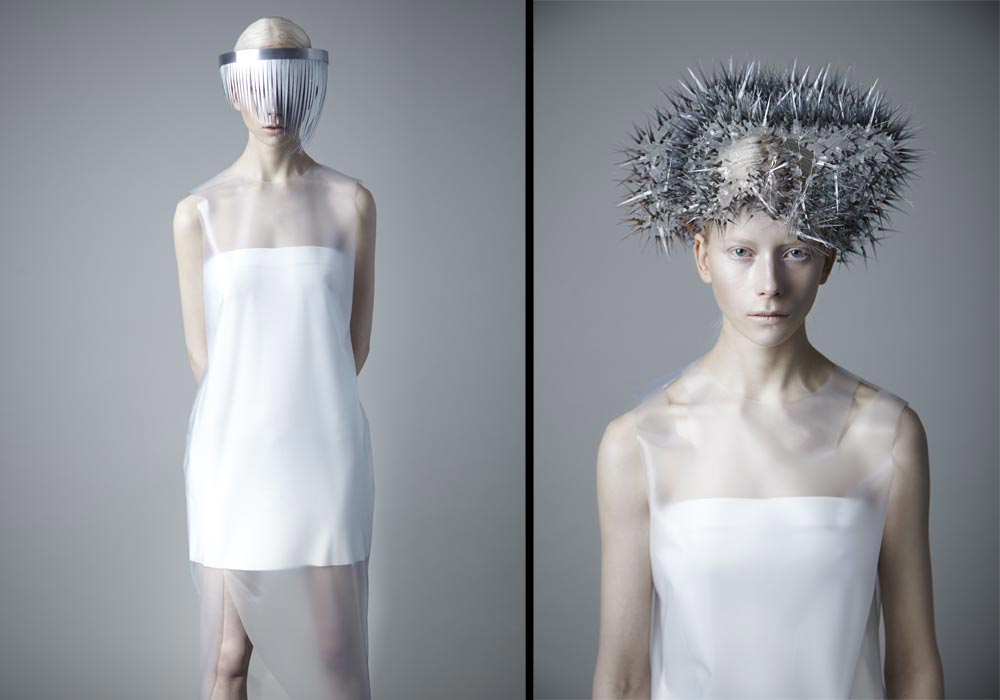
Maiko Takeda
-
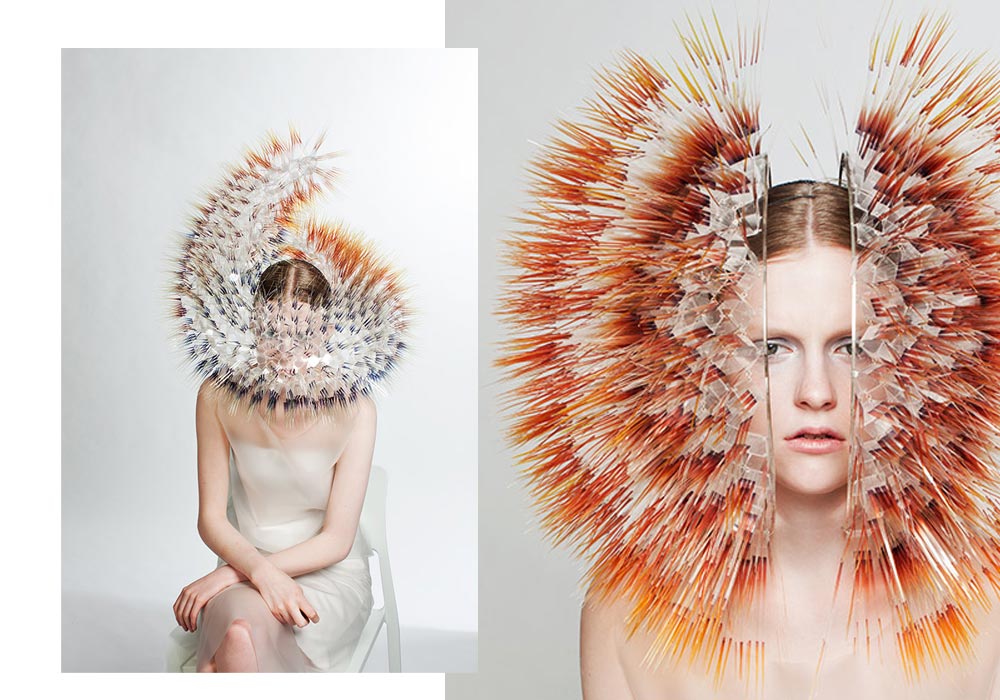
Maiko Takeda
-
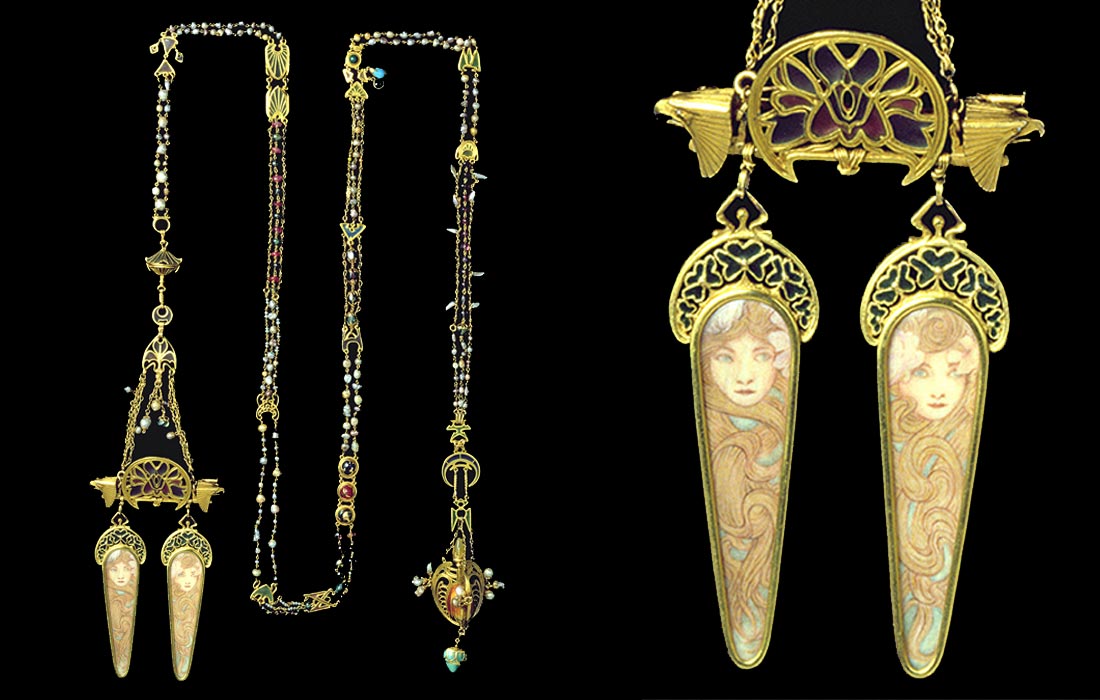
Alfons Mucha - Chain and pendants done by Georges Fouquet - Gold, enamel, water pearls, mother-of-pearl and gemstones, 1900 - Mucha foundation, Prague © Mucha trust 2018
-
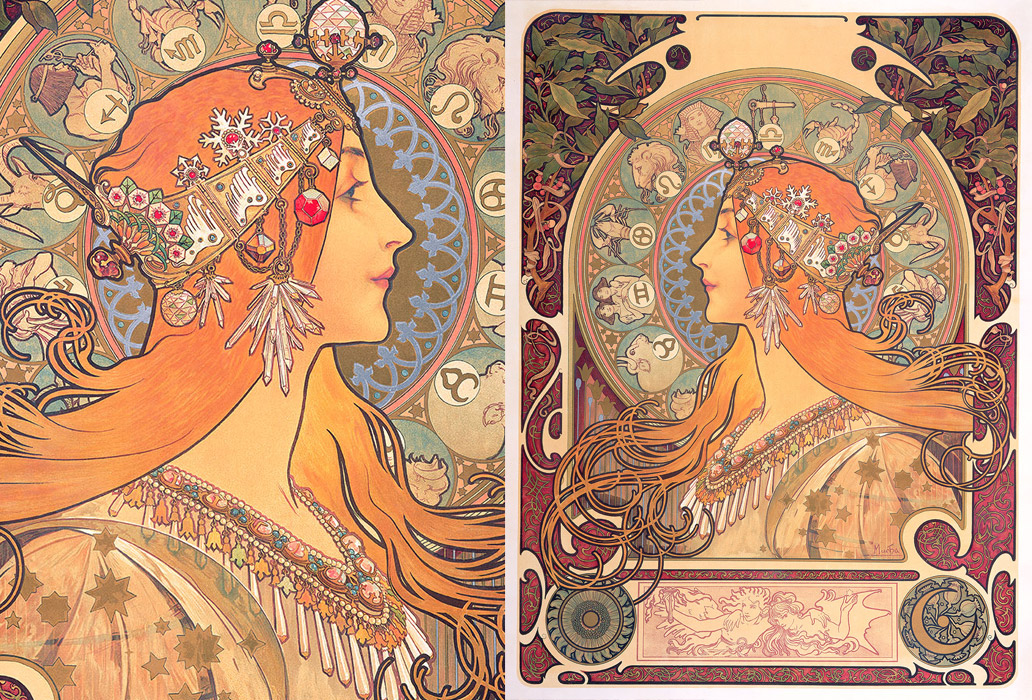
Alfons Mucha - Le Zodiaque, lithography, 1896 - Mucha Foundation, Prague © Mucha Trust 2018
-
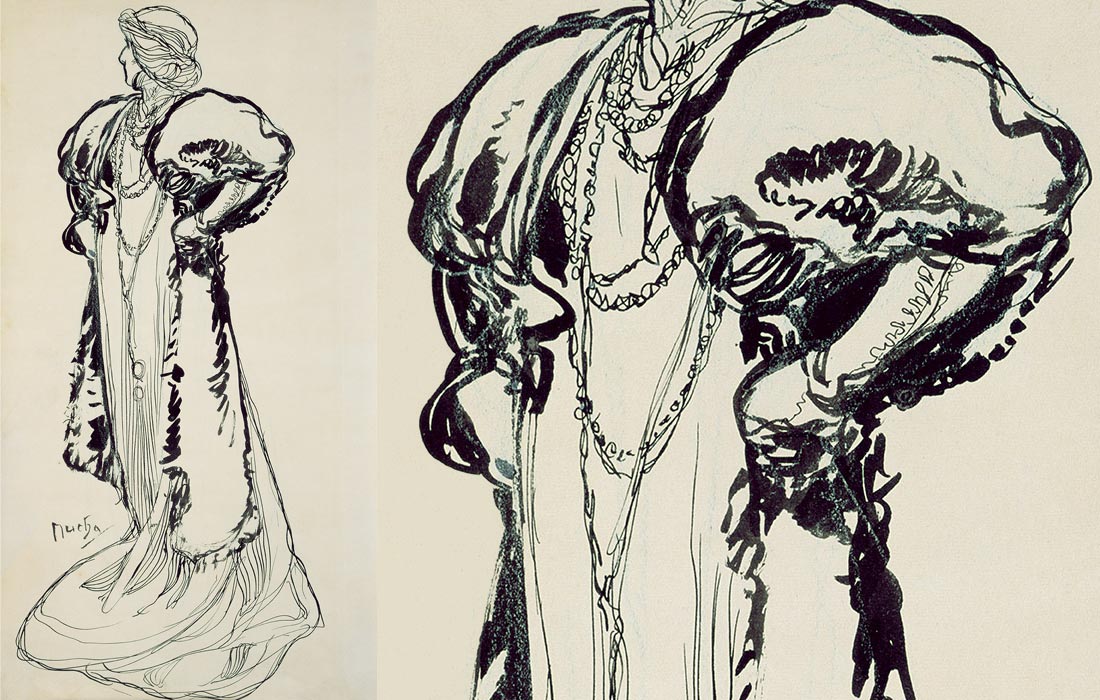
Alfons Mucha - Sarah Bernhardt, full portrait , study circa 1897 - Mucha foundation, Prague © Mucha trust 2018
-

Alfons Mucha - Rêverie, 1897 / Salon des Cent : exposition de l'oeuvre de Mucha, 1897 - Mucha Foundation, Prague © Mucha Trust 2018
-

Alfons Mucha - Study for the poster of the 6th Sokol's festival, 1911 / Médée, 1898 - Mucha Foundation © Mucha Trust 2018
-

Alfons Mucha - Drawing for the Georges Fouquet shop in Paris, 1900 - Mucha Foundation © Mucha Trust 2018
-
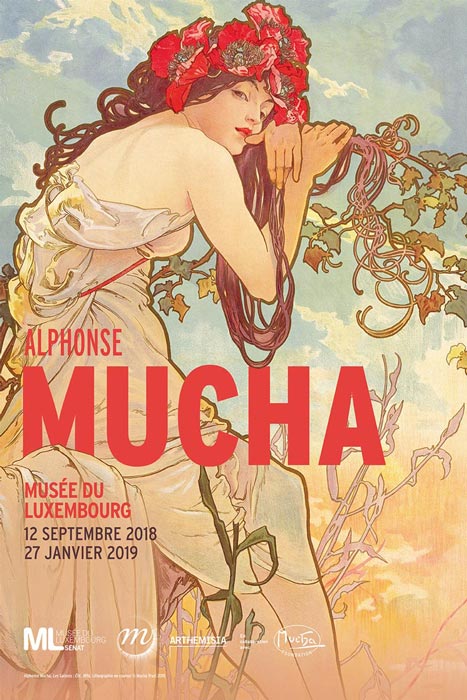
Alfons Mucha exhibition poster
-

An example of Mucha's work : the combined bracelet and ring designed for Sarah Bernhardt, made by Fouquet in 1899
-
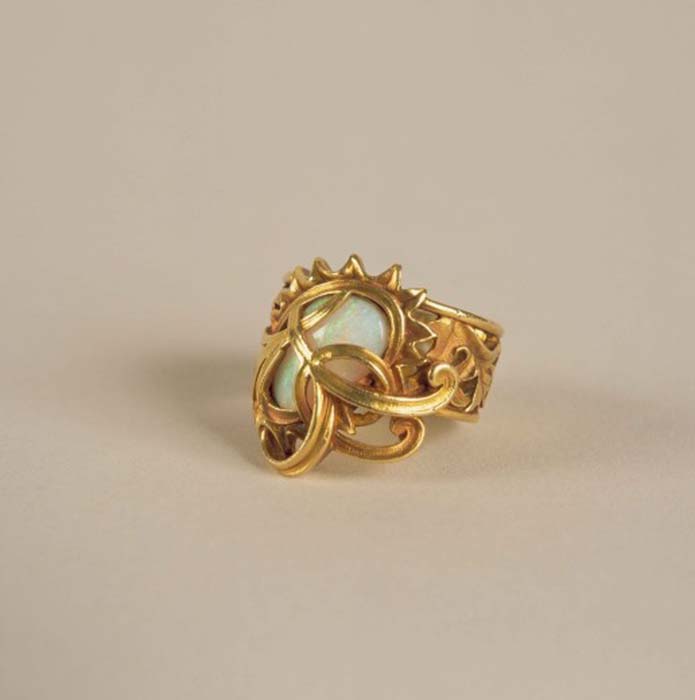
Georges Fouquet and Alfons Mucha - "Peacock" ring made of gold and opal - 1900
-
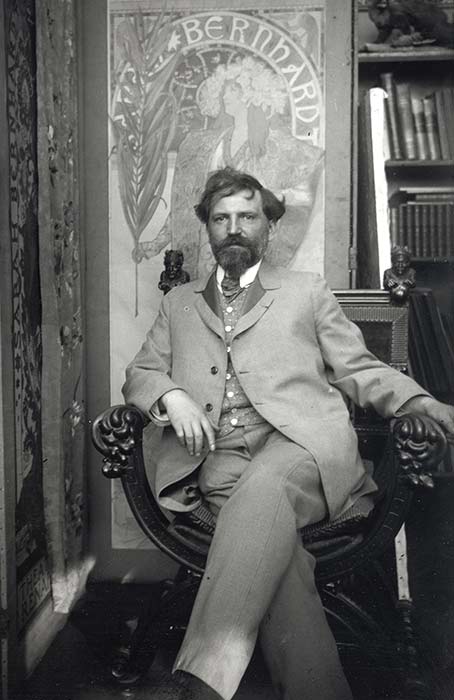
Alfons Mucha in his studio, rue du Val-de-Grâce (Paris) - ca 1901
-
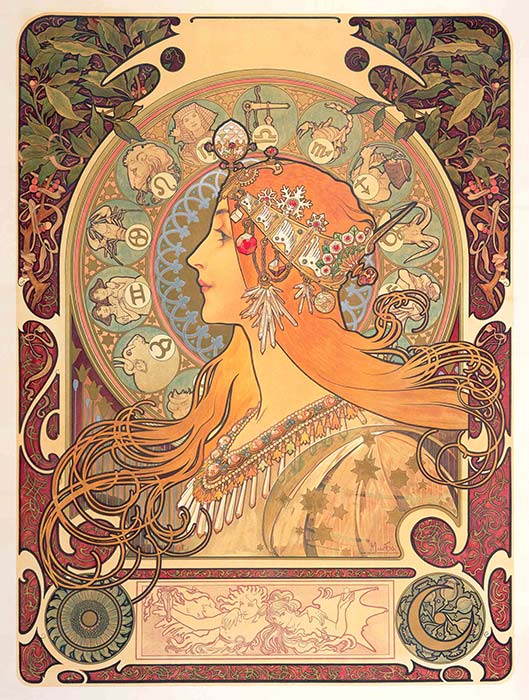
Alfons Mucha - "Zodiac" - 1896
-
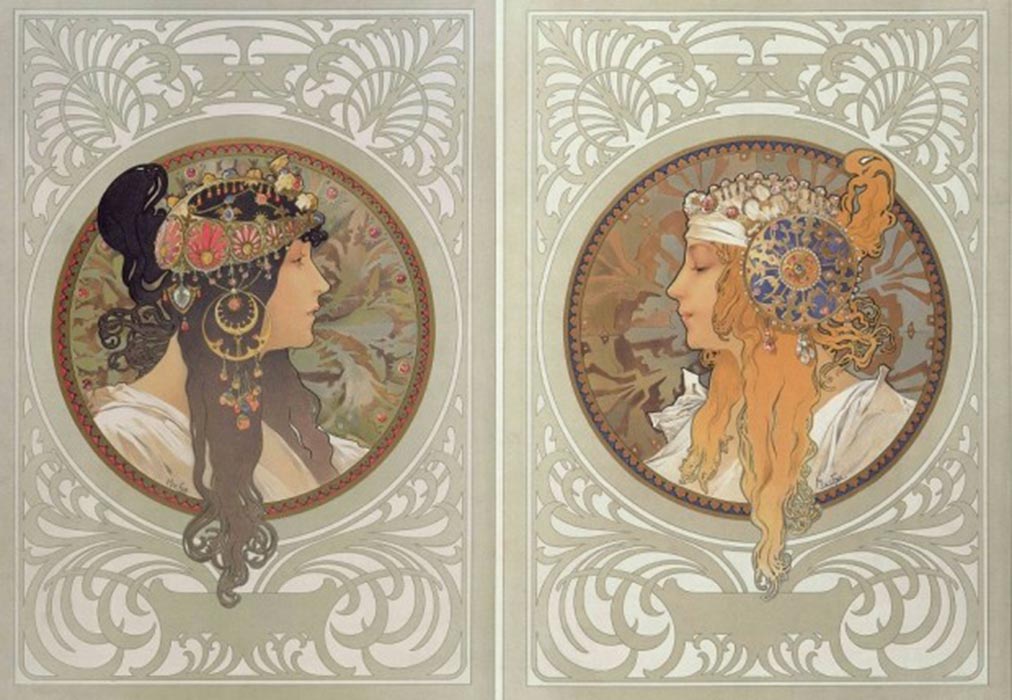
Alfons Mucha - "Byzantine Heads" - 1897
-
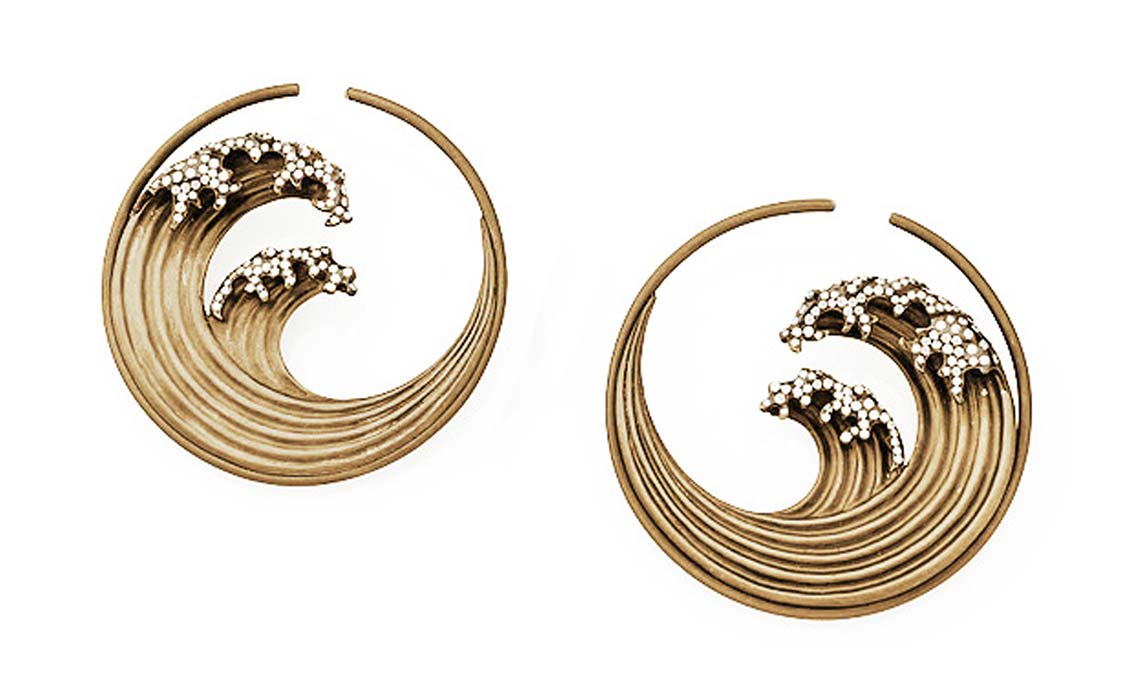
Garaude - Earrings inspired by Hokusai's "The Wave", made of titanium and diamonds
-
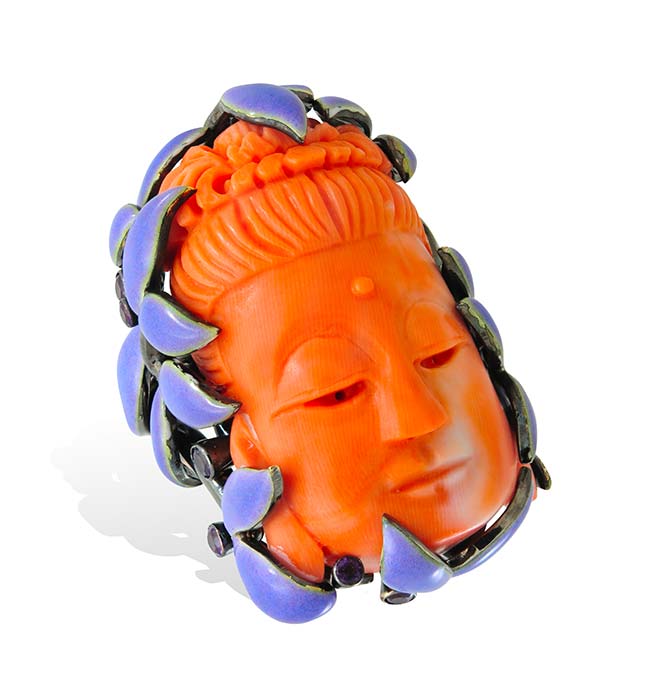
Lydia Courteille - Buddha head made of carved red coral, surrounded by enamel
-
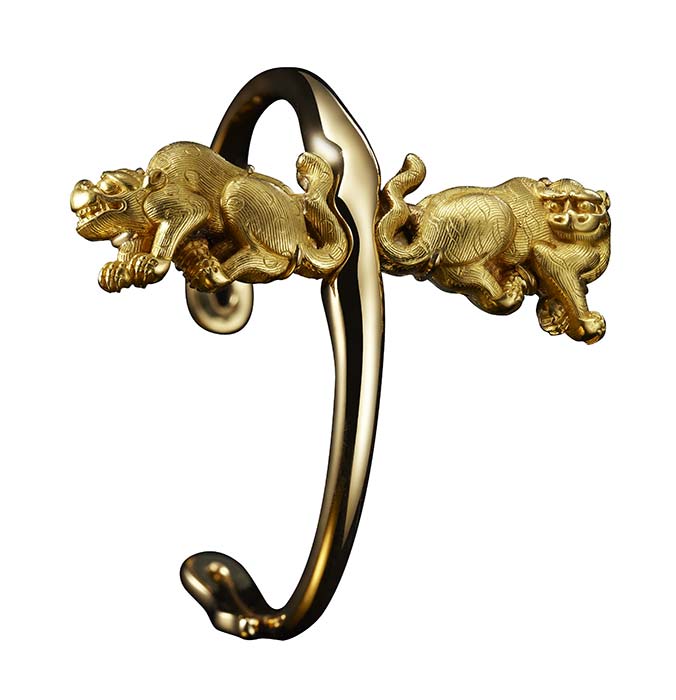
Maison Auclert - Bracelet set with a pair of 17th century menuki (Japanese sword ornaments)
-
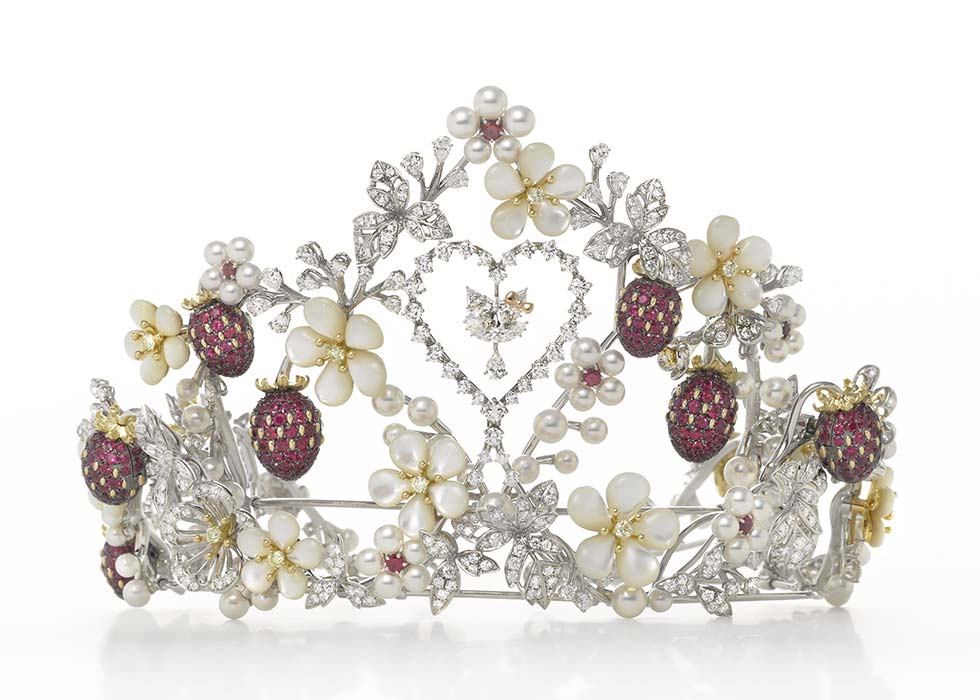
Tiara realized by Mikimoto, the inventor of cultured pearls and Hello Kitty brand
-
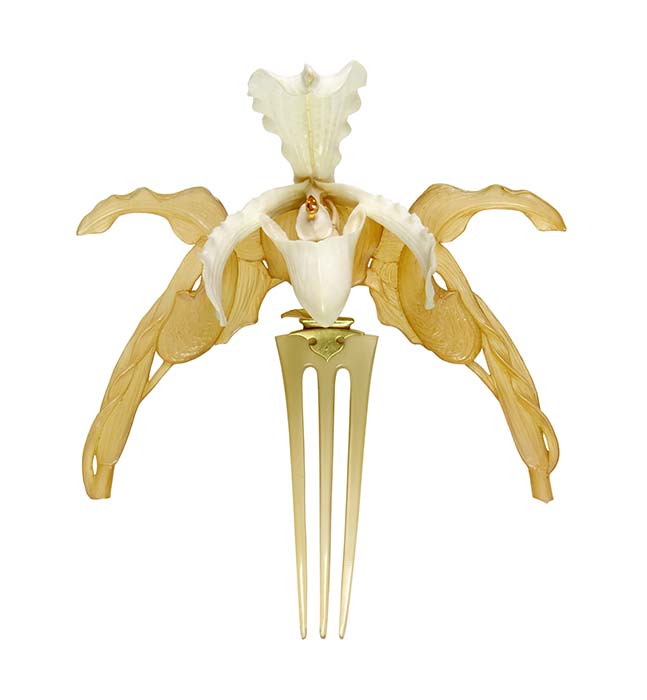
René Lalique loves the orchid, a Japanese flower, made of carved ivory - ca 1903-1904
-
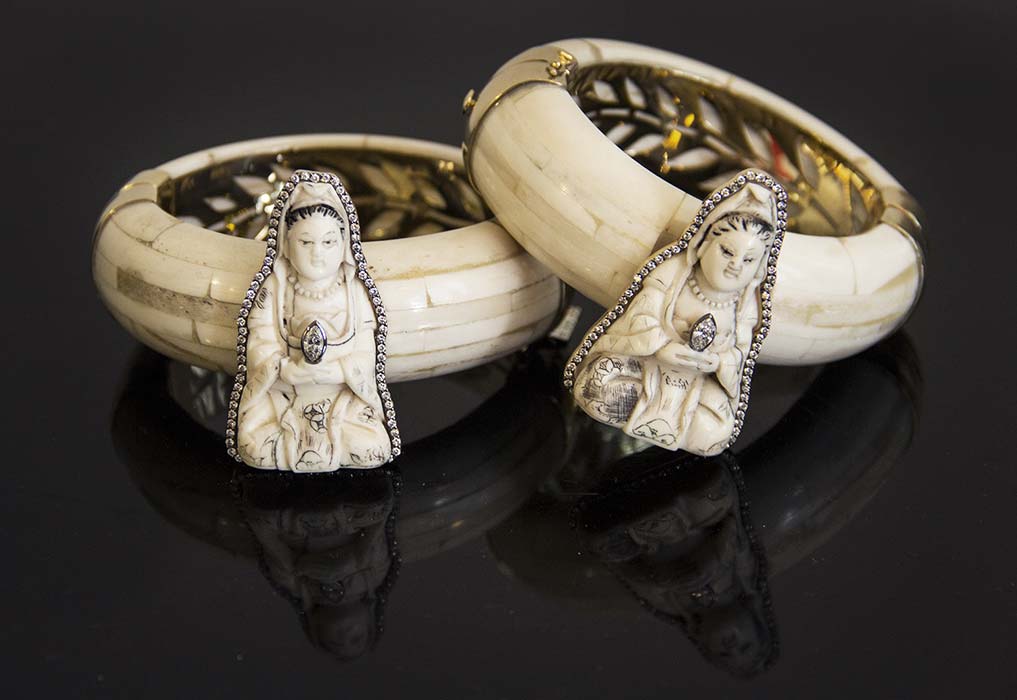
Silvia Furmanovich - Bracelets with netsuke made of carved bone
-
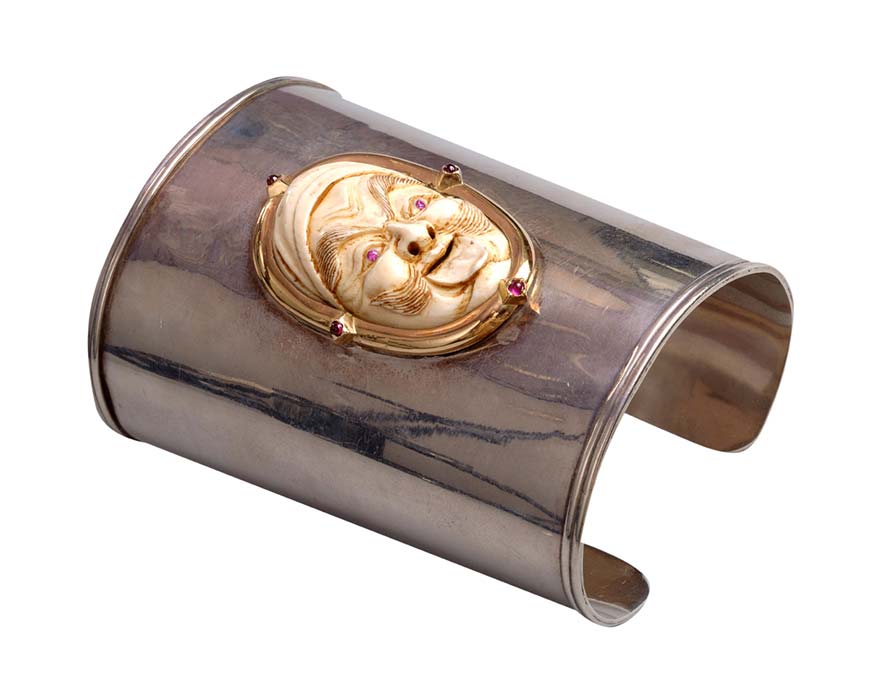
Sylvie Corbelin - In the middle of the cuff, a cameo made of ivory, depicting a Noh Theater mask
-
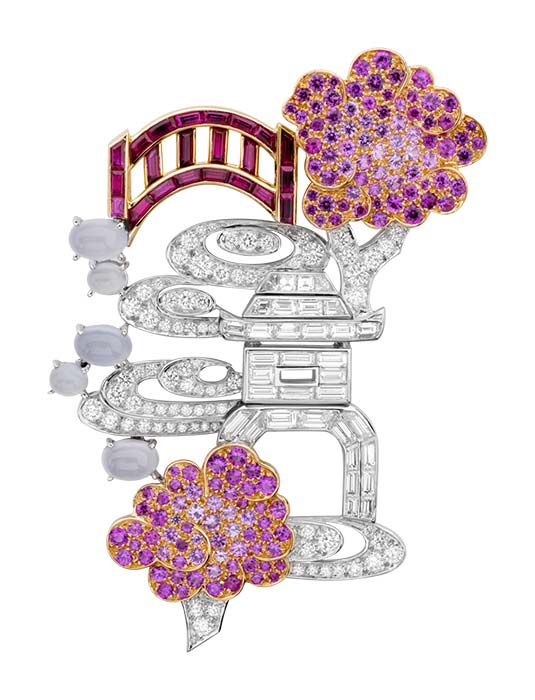
Van Cleef and Arpels - Clip depicting a Japanese garden
-
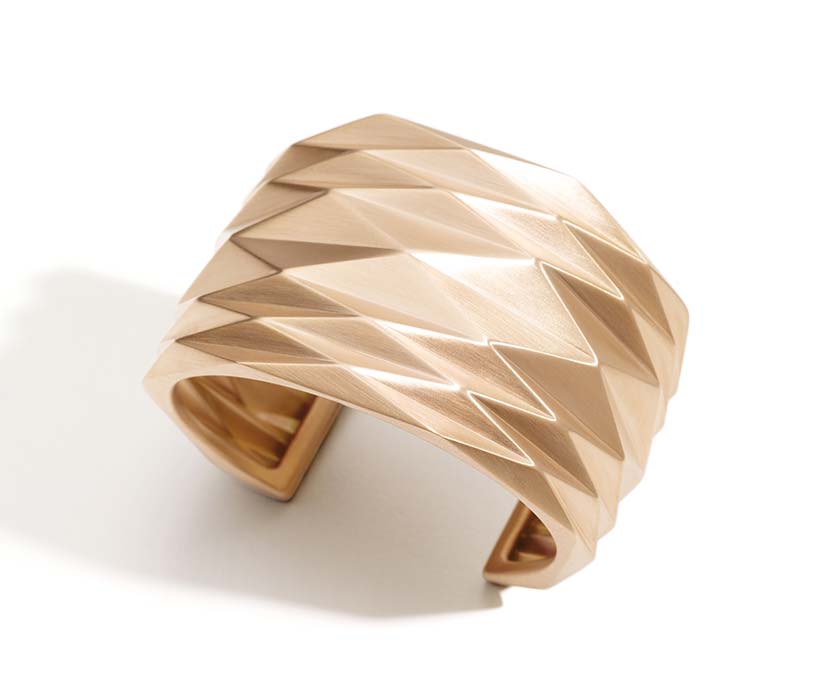
Vhernier - Cuff made of folded pink gold, like origami
-
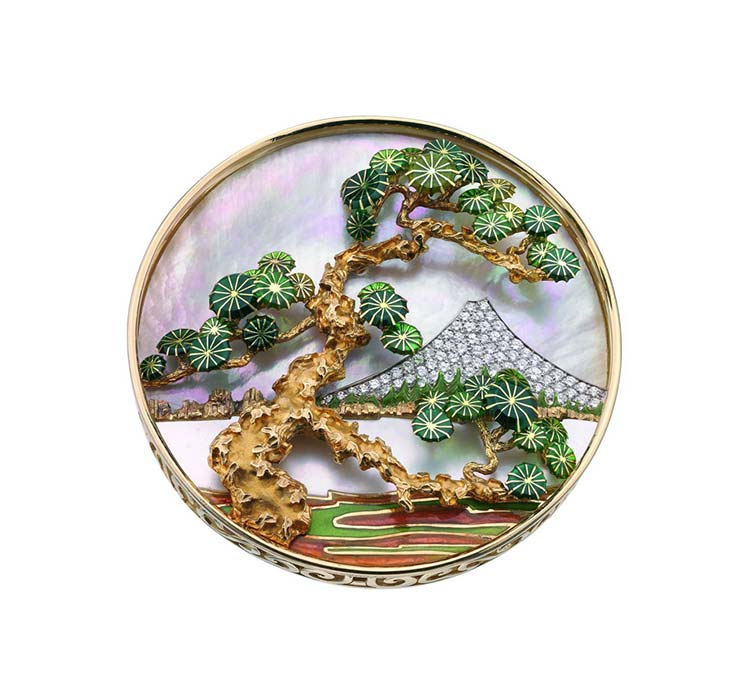
Bulgari - "Fuji-Yama" brooch made of gold, platinum and multicolor enamel - 1971
-
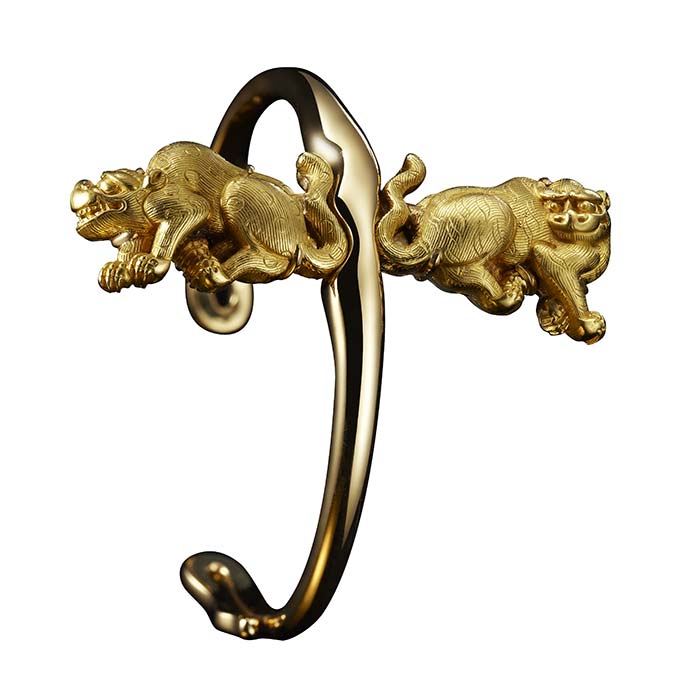
Bracelet set with a pair of 17th century gold menuki featuring tigers
-
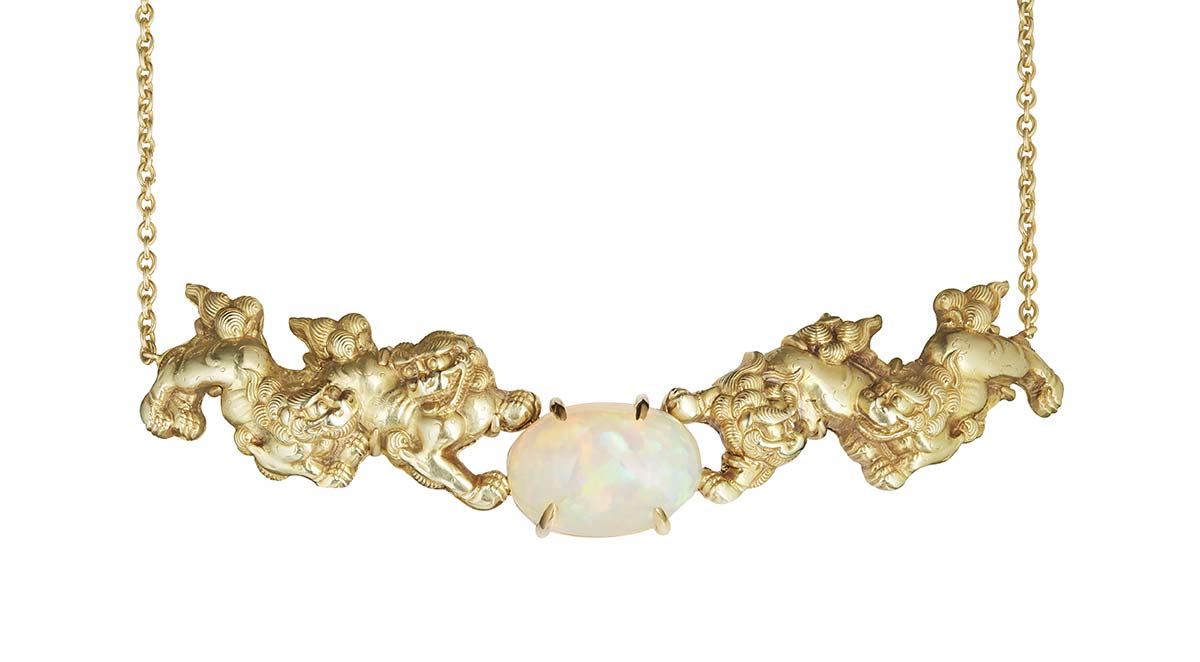
Pair of menuki shishi (lion-shaped) holding an opal
-
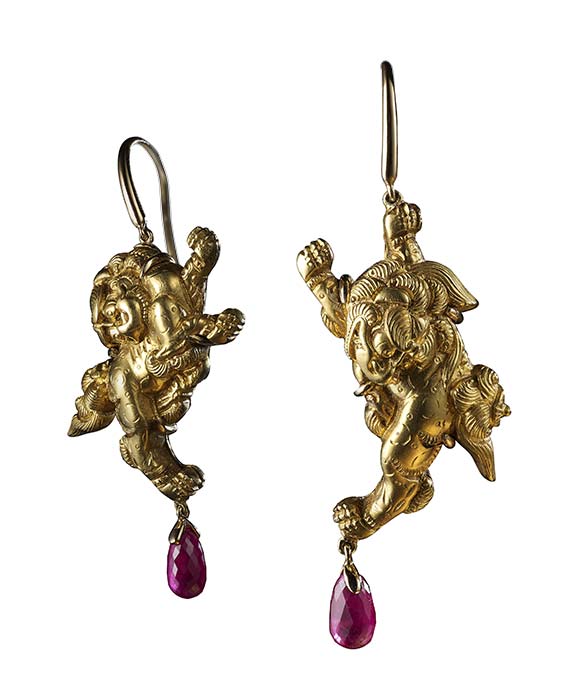
Pair of gold menuki shishi (lion-shaped) turned into earrings
-
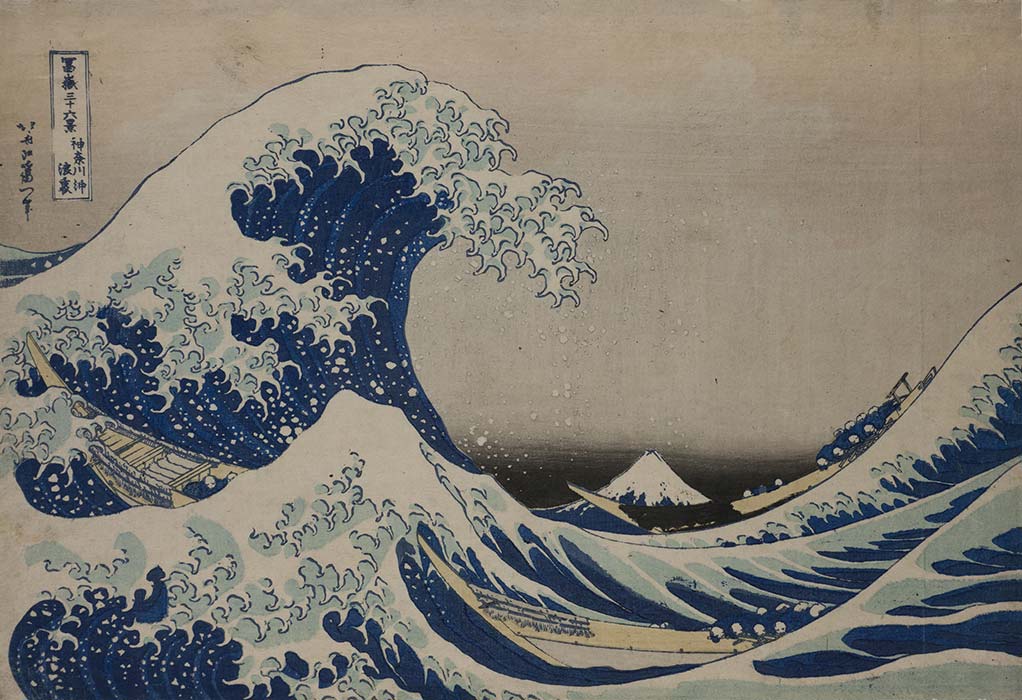
Hokusai, Under the wave off Kanagawa, ca 1829-1833
-
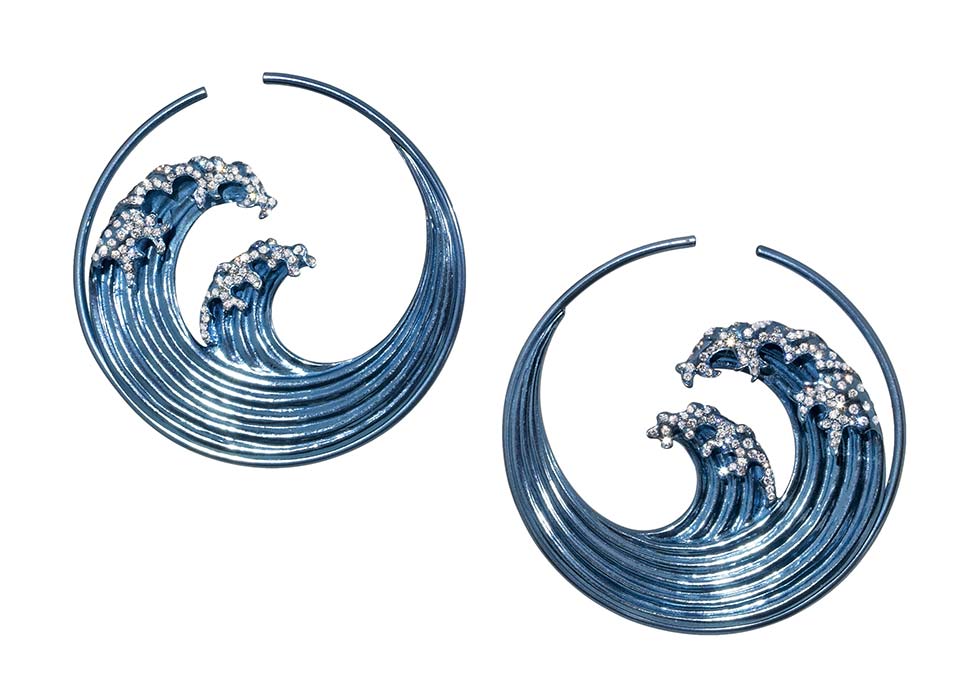
Garaude - Hokusai earrings made of titanium and diamonds
-
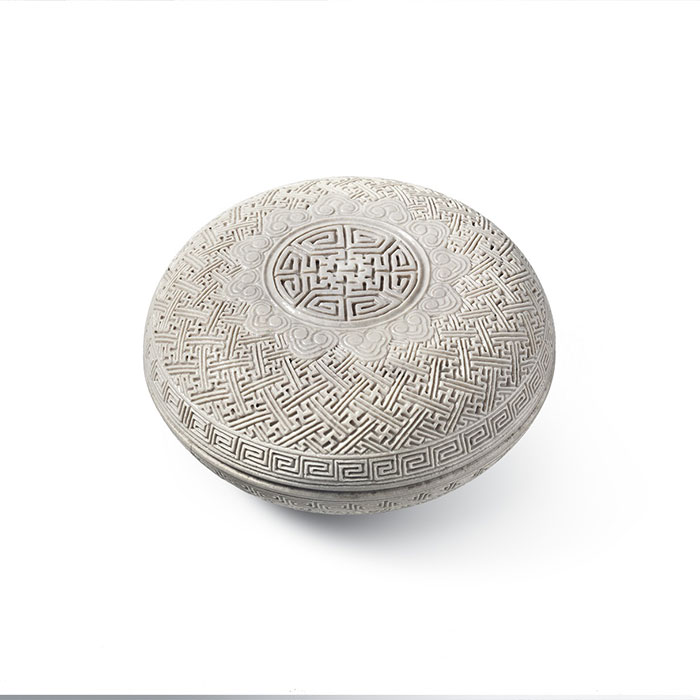
Cartier - "Pâte tendre" (soft paste) porcelain - China, Qing dynasty (1644-1911) - Baur Foundation
-
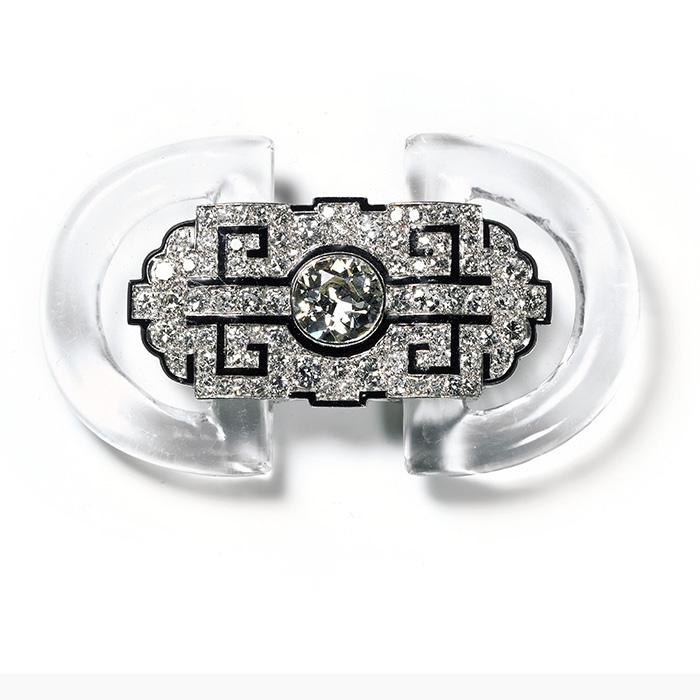
Cartier - Platinum, gold, diamonds, rock crystal, enamel - New York, 1926 - Collection Cartier


Sign up for the newsletter the french jewelry post
Subscribe
